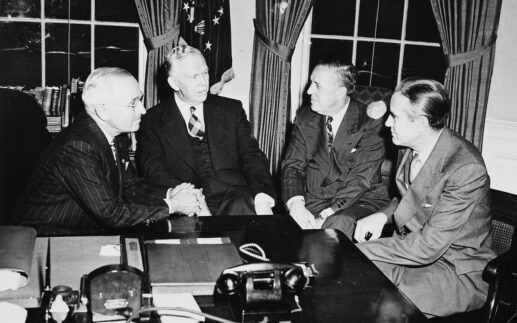Company Detail
UBS Group AG is a leading global financial services company based in Switzerland. It offers a wide range of services, including wealth management, investment banking, asset management, and retail banking. UBS is known for helping individuals, businesses, and institutions manage their wealth, make investments, and navigate complex financial markets.
Founded over 150 years ago, UBS has grown into one of the most trusted names in the financial world. The company operates in more than 50 countries, serving millions of clients around the globe. UBS is dedicated to providing top-notch financial advice and innovative solutions, helping clients achieve their financial goals with confidence.
With a strong commitment to sustainability and responsible investing, UBS aims to create long-term value for its clients, shareholders, and society as a whole. Whether you’re looking to invest, grow your wealth, or seek financial advice, UBS is a trusted partner in navigating your financial journey.

Company Logo
Main Business Model:
UBS operates primarily through three key divisions:
- Wealth Management: UBS is renowned for its wealth management services, offering financial planning, investment advice, and personalized solutions to high-net-worth individuals and families. This division helps clients grow and protect their wealth across generations.
- Investment Bank: UBS’s investment banking division provides a wide range of services, including advisory, capital markets, and trading. It serves corporate clients, financial institutions, and governments, helping them navigate complex financial markets and achieve their strategic goals.
- Asset Management: UBS manages investments for a broad range of clients, including institutions, intermediaries, and private investors. The asset management division focuses on delivering innovative and sustainable investment solutions across various asset classes.
Company Profile
Company Chart
Fundamentals Data
Technical Data
News
Conclusion
Conclusion: UBS Group AG stands as a global leader in financial services, with a strong legacy rooted in Switzerland’s banking tradition. Through its wealth management, investment banking, and asset management divisions, UBS continues to offer comprehensive financial solutions to clients worldwide. With a commitment to innovation, sustainability, and excellence, UBS remains a key player in shaping the future of global finance.
Wikipedia
OXY- LIVE PRICE , CHART , NEWS AND FINANCIALS

Costco – Price ,Charts, history and Financials

CHARTS
Financials
News
Company History and Founding Days
Table of Contents
- Introduction
- Founding Days
- Company Founders
- Major Stakeholders
- Company Timeline
- Board of Directors
- Conclusion
Introduction
Costco Wholesale Corporation, known simply as Costco, has grown from a single warehouse in Seattle to a global retail giant. Renowned for its membership-based warehouse model, Costco offers a wide variety of goods at competitive prices, attracting millions of loyal members worldwide. This article delves into the founding days of Costco, the visionaries behind its success, its major stakeholders, and a detailed timeline of its growth. Additionally, we will take a closer look at the current board of directors who steer the company’s strategic direction.

Founding Days
Costco’s journey began in 1983 in Seattle, Washington. The concept was simple yet innovative: create a membership-only warehouse that could offer low prices by selling products in bulk. This idea was inspired by the success of Price Club, a warehouse store founded by Sol Price in 1976, which targeted small businesses with discounted bulk purchases.
Company Founders
Costco was co-founded by James (Jim) Sinegal and Jeffrey H. Brotman. Jim Sinegal, with a background in retail, brought extensive experience from his time at FedMart and Price Club. Jeffrey Brotman, a lawyer and entrepreneur, provided the legal acumen and business strategy essential for the company’s initial growth. Together, they opened the first Costco warehouse on September 15, 1983, in Seattle.
James (Jim) Sinegal
Jim Sinegal’s career in retail began in 1954 as a grocery bagger. His tenure at Price Club, where he served in various management roles, was instrumental in shaping his vision for Costco. Known for his hands-on management style and focus on customer satisfaction, Sinegal played a crucial role in establishing Costco’s reputation for quality and low prices.
Jeffrey H. Brotman
Jeffrey Brotman, with his legal background and business insight, complemented Sinegal’s retail expertise. Brotman, a University of Washington School of Law graduate, had a keen understanding of corporate law and finance, which was vital during the early stages of Costco’s development.
Major Stakeholders
As of recent reports, the major stakeholders in Costco include:
- Institutional Investors: Vanguard Group and BlackRock are among the top institutional investors, holding significant shares in the company.
- Founders and Executives: Although Jim Sinegal retired in 2011, his influence remains, and he retains a stake in the company.
- Individual Shareholders: Many individual investors also hold shares, benefiting from Costco’s consistent performance and growth.
Company Timeline
1983
- September 15: The first Costco warehouse opens in Seattle, Washington.
1985
- Costco goes public on December 5, raising capital to fuel expansion.
1993
- Costco merges with Price Club, creating PriceCostco, and expanding its footprint significantly.
1997
- The company rebrands to Costco Wholesale Corporation, solidifying its market identity.
2005
- Annual sales surpass $50 billion, marking a significant milestone in its growth trajectory.
2011
- Jim Sinegal retires as CEO, succeeded by Craig Jelinek, who continues the company’s expansion and maintains its core principles.
2015
- Costco transitions from American Express to Visa for its credit card partnership, enhancing customer benefits.
2020
- During the COVID-19 pandemic, Costco adapts by enhancing its e-commerce capabilities and implementing safety measures, ensuring continuous service to its members.
Board of Directors
The board of directors at Costco includes a diverse group of experienced professionals overseeing the company’s strategic direction:
- Hamilton E. James – Chairman of the Board, Executive Chairman of Blackstone Group.
- Craig Jelinek – President and CEO of Costco.
- Susan Decker – Former President of Yahoo! Inc.
- Kenneth D. Denman – CEO of Emotient, Inc.
- Hamilton E. James – Executive Vice Chairman of Blackstone Group.
- John W. Meisenbach – Founder of MCM, a financial consulting firm.
- Charles T. Munger – Vice Chairman of Berkshire Hathaway Inc.
- Jeffrey S. Raikes – Co-founder of the Raikes Foundation.
- Jill S. Ruckelshaus – Former Commissioner of the United States Commission on Civil Rights.
- Maggie Wilderotter – Former CEO of Frontier Communications.
Conclusion
Costco Wholesale Corporation’s evolution from a single warehouse in Seattle to a global retail powerhouse is a testament to the vision and dedication of its founders, Jim Sinegal and Jeffrey Brotman. Their commitment to providing quality goods at low prices, coupled with a focus on customer satisfaction, has driven Costco’s success. The company’s strategic growth, guided by its board of directors, ensures that it continues to thrive in the competitive retail landscape. Costco remains a beloved destination for millions, embodying the values of efficiency, quality, and customer care that have defined it since its inception.
Referance: Chatgpt
UNITEDHEALTH GROUP INCORPORATED

Company Charts
Company financials
Company Profile
UnitedHealth Group: An Overview
Introduction
UnitedHealth Group (UHG) is a diversified healthcare company based in the United States, known for its extensive network of services in the healthcare sector. Founded in 1977, UHG has grown to become a leading player in the healthcare industry, offering a broad spectrum of health care products and insurance services. This article delves into the financial history, board of directors, and major stakeholders of UnitedHealth Group.
Financial Data and History
Growth and Expansion
UnitedHealth Group has demonstrated significant growth since its inception. The company’s strategy of expanding through acquisitions and diversifying its services has played a crucial role in its financial success.
- Revenue Growth: In 2023, UHG reported revenues of $324.2 billion, reflecting a steady increase from previous years. This growth has been driven by the expansion of its UnitedHealthcare and Optum segments.
- Net Income: The net income for 2023 stood at approximately $20.6 billion, showcasing a robust profit margin that underscores the company’s efficient operational strategies and cost management.
Financial Milestones
- IPO and Early Growth: UHG went public in 1984. The capital raised allowed for rapid expansion and diversification.
- Acquisitions: Key acquisitions such as PacifiCare Health Systems in 2005, Catamaran Corporation in 2015, and Surgical Care Affiliates in 2017 have significantly boosted UHG’s market presence and revenue streams.
Key Financial Indicators
- Earnings per Share (EPS): For 2023, the EPS was reported at $21.40, up from $18.50 in 2022, reflecting the company’s strong profitability.
- Dividend Payout: UHG has a history of returning value to shareholders through dividends, with the 2023 dividend payout ratio being approximately 28%, indicative of a healthy balance between rewarding shareholders and retaining earnings for growth.
Board of Directors
UnitedHealth Group’s board of directors is composed of a diverse group of experienced professionals who guide the company’s strategic direction. As of 2024, the key members of the board include:
- Stephen J. Hemsley: Serving as Chairman, Hemsley has been with UHG in various leadership roles since 1997.
- Andrew Witty: CEO and Director, Witty brings extensive experience in the global healthcare industry, having previously served as CEO of GlaxoSmithKline.
- John H. Noseworthy: Former President and CEO of Mayo Clinic, Noseworthy’s expertise in healthcare management adds significant value to the board.
- Michele J. Hooper: Known for her leadership in corporate governance and financial oversight, Hooper chairs the audit committee.
The board’s collective expertise in healthcare, finance, and corporate governance positions UHG for sustained success and innovation.
Major Stakeholders
Institutional Investors
UnitedHealth Group’s major stakeholders primarily consist of institutional investors who hold significant portions of the company’s shares. As of the latest reports:
- Vanguard Group: One of the largest stakeholders, holding approximately 8% of UHG’s shares.
- BlackRock, Inc.: Another major institutional investor, with about 7% ownership.
- State Street Corporation: Holds around 4.5% of the company’s shares, making it a significant stakeholder.
Insider Holdings
- Stephen J. Hemsley: As a long-serving executive, Hemsley holds a substantial number of shares, aligning his interests with those of other shareholders.
- Andrew Witty: The CEO also holds a notable share position, reinforcing his commitment to the company’s long-term success.
Conclusion
UnitedHealth Group’s impressive financial trajectory, robust board leadership, and significant institutional backing underscore its strong position in the healthcare industry. With a strategic focus on expanding its service offerings and maintaining operational excellence, UHG is well-positioned to continue its growth and deliver value to its stakeholders. The company’s ongoing investments in technology and innovation are likely to drive future success, ensuring that it remains a leader in the evolving healthcare landscape.
For more information on UnitedHealth Group, including live stock prices, news, and detailed financial data, please visit their official website: UnitedHealth Group.
Company News
Berkshire Hathaway Charts and Financials Data
Charts
About Company
![]()
Berkshire Hathaway, Inc engages in the provision of property and casualty insurance and reinsurance, utilities and energy, freight rail transportation, finance, manufacturing, and retailing services. It operates through following segments: GEICO, Berkshire Hathaway Reinsurance Group, Berkshire Hathaway Primary Group, Burlington Northern Santa Fe, LLC (BNSF), Berkshire Hathaway Energy, McLane Company, Manufacturing, and Service and Retailing. The GEICO segment involves in underwriting private passenger automobile insurance mainly by direct response methods. The Berkshire Hathaway Reinsurance Group segment consists of underwriting excess-of-loss and quota-share and facultative reinsurance worldwide. The Berkshire Hathaway Primary Group segment comprises of underwriting multiple lines of property and casualty insurance policies for primarily commercial accounts. The BNSF segment operates railroad systems in North America. The Berkshire Hathaway Energy segments deals with regulated electric and gas utility, including power generation and distribution activities, and real estate brokerage activities. The McLane Company segment offers wholesale distribution of groceries and non-food items. The Manufacturing segment includes industrial and end-user products, building products, and apparel. The Service and Retailing segment provides fractional aircraft ownership programs, aviation pilot training, electronic components distribution, and various retailing businesses, including automobile dealerships, and trailer and furniture leasing. The company was founded by Oliver Chace in 1839 and is headquartered in Omaha, NE.
Reference: Trading view
Financial Data
Company News
RIVIAN AUTOMOTIVE-RIVN Chart and Financials

Chart
Company Financials
Company Profile
Company News
ARM HOLDINGS PLC(ARM) – Charts and Financials

Overview:
Arm Holdings plc, often simply referred to as Arm, is a British multinational semiconductor and software design company. Headquartered in Cambridge, England, Arm is renowned for its pioneering role in the development of advanced processor architectures that are integral to a wide array of electronic devices globally.
History:
Arm was founded in 1990 as a joint venture between Acorn Computers, Apple Inc., and VLSI Technology. The company initially focused on designing RISC (Reduced Instruction Set Computing) processors, which are known for their efficiency and performance. Over the years, Arm’s technology has become foundational to many modern computing devices.
Core Business and Products:
Arm’s primary business revolves around designing and licensing intellectual property (IP) for semiconductor processors. Rather than manufacturing chips themselves, Arm licenses its designs to other companies that produce chips for various applications. Key product lines include:
-
Cortex-M Series:
-
Targeted at microcontrollers and embedded systems, widely used in Internet of Things (IoT) devices.
-
Cortex-A Series:
-
High-performance processors found in smartphones, tablets, and laptops.
-
Mali GPUs:
-
Graphics processing units used in mobile devices and other embedded systems.
-
Neoverse:
-
Processor designs aimed at infrastructure applications, including servers and networking equipment.
Business Model:
Arm’s business model is based on licensing its processor designs to semiconductor companies, which then integrate these designs into their own chips. This model involves an initial licensing fee followed by royalties based on the volume of chips produced. This approach has allowed Arm to achieve broad penetration across various markets without directly engaging in manufacturing.
Market Presence:
Arm’s technology is embedded in a vast majority of mobile devices, making it a dominant player in the smartphone and tablet markets. Beyond mobile, Arm processors are increasingly used in other areas such as:
-
Automotive:
-
Arm designs are used in advanced driver-assistance systems (ADAS) and emerging autonomous driving technologies.
-
Data Centers:
-
High-performance, energy-efficient Arm processors are used in servers.
-
IoT:
-
Arm’s low-power processors are ideal for a wide range of connected devices, from smart home gadgets to industrial IoT applications.
Ownership and Strategic Moves:
Arm was acquired by the Japanese conglomerate SoftBank Group in 2016 for approximately $32 billion. In September 2020, Nvidia announced plans to acquire Arm from SoftBank for $40 billion. However, this acquisition faced significant regulatory scrutiny and challenges, particularly from competition authorities concerned about the potential impacts on the semiconductor industry.
Innovation and Future Prospects:
Arm continues to innovate, particularly in areas such as artificial intelligence (AI) and machine learning (ML). Its latest processor designs are optimized for handling AI and ML workloads, positioning the company well for the future of computing. Additionally, Arm is enhancing the security features of its architectures to address growing cybersecurity concerns.
Arm’s ongoing research and development efforts aim to maintain its competitive edge and expand its influence across emerging technologies. The company’s role in driving advancements in performance, efficiency, and scalability ensures its continued relevance in the tech industry.
Conclusion:
Arm Holdings plc is a critical player in the global technology landscape, with its processor designs forming the backbone of countless electronic devices. By focusing on innovation and expanding its IP portfolio, Arm is poised to remain at the forefront of technological advancement, influencing a wide range of industries from mobile computing to data centers and beyond.
Symbol Details
Company Chart
Company Financials
Palantir Technologies Inc Chart and Details


Chart
Company Financials
STARBUCKS CORPORATION – Leading Coffee Chain

Company Chart
Company Financials
Company Profile
Company News
Starbucks, one of the world’s largest coffeehouse chains, was founded by three partners: Jerry Baldwin, Zev Siegl, and Gordon Bowker. Here’s a brief overview of Starbucks’ history and founding days:
Early History:
- 1971: The first Starbucks store was opened in Seattle’s Pike Place Market on March 30, 1971. It was located at 2000 Western Avenue and specialized in selling high-quality coffee beans and equipment.
- Partnership: Jerry Baldwin, Zev Siegl, and Gordon Bowker, all academics, were inspired by Alfred Peet, who introduced them to high-quality coffee beans through his store, Peet’s Coffee & Tea. They wanted to replicate the success of Peet’s by selling high-quality coffee beans and equipment.
Name and Logo:
- Inspiration: The name “Starbucks” was inspired by the first mate in Herman Melville’s Moby Dick, as well as the coffee-loving character “Starbuck” from the book.
- Logo: The original Starbucks logo depicted a topless siren from Greek mythology, designed by Terry Heckler. Over the years, the logo underwent several modifications, but the siren remained its central motif.

Growth and Expansion:
- 1980s: Starbucks started to expand its offerings beyond coffee beans and equipment, offering brewed coffee and espresso beverages. They also began to open more stores in the Seattle area.
- 1984: Howard Schultz, who was the director of retail operations and marketing, suggested that Starbucks should sell espresso beverages. However, when the original founders were not interested, Schultz left to start his own chain of coffeehouses called Il Giornale.
- 1987: Schultz bought Starbucks’ assets with the help of investors and merged his Il Giornale stores with Starbucks. This marked the beginning of Starbucks’ rapid expansion.
Rapid Expansion:
- 1990s: Starbucks began expanding aggressively, opening stores outside of Seattle. By the end of the decade, Starbucks had grown to over 2,000 stores worldwide.
- Global Reach: Starbucks continued its global expansion, entering markets in Europe, Asia, and beyond. It became a symbol of American coffee culture worldwide.
Evolution and Diversification:
- Product Diversification: Starbucks expanded its menu beyond coffee to include tea, pastries, sandwiches, and other snacks.
- Digital Innovation: Starbucks was one of the early adopters of digital technology in the retail sector. It introduced mobile payments, loyalty programs, and mobile ordering to enhance customer experience.
Cultural Impact:
- Third Place: Starbucks popularized the concept of the “third place” – a space between home and work where people could relax, socialize, or work.
- Corporate Social Responsibility: Starbucks has been involved in various social and environmental initiatives, including fair trade practices, ethically sourced coffee, and community development programs.
Today, Starbucks operates thousands of stores worldwide and continues to be a dominant force in the global coffee industry. Its influence extends beyond coffee, impacting urban culture, consumer behavior, and the way businesses approach customer experience.
Referance: CHATGPT

SHOPIFY INC.- Leading E- Commerce Platform

Game Stop Corporation – Leading Gaming Company

ExxonMobil Corporation Leading Energy Company
Company profile
Exploring the Birth of Exxon Mobil: A Journey Through History
Exxon Mobil, a titan in the oil and gas industry, boasts a storied past that stretches back to the 19th century. Its evolution mirrors the transformation of the energy sector and the myriad influences that have shaped it over time. Let’s delve into the origins and milestones of this iconic company, from its inception to its current status as a global leader.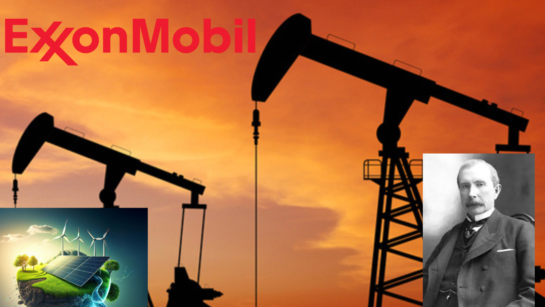
Origins:
Exxon Mobil’s roots can be traced to two separate entities: Exxon and Mobil.
Exxon:
Founded in 1870 by John D. Rockefeller, the Standard Oil Company quickly rose to prominence as the world’s largest oil refiner. However, in 1911, it was dismantled by the U.S. Supreme Court due to antitrust concerns. One of the resulting companies, Standard Oil of New Jersey, eventually became Exxon.
Mobil:
In 1931, the Socony-Vacuum Oil Company emerged from the merger of Socony and Vacuum Oil. This company evolved over time to become Mobil Corporation.
The Merger:
The pivotal moment in Exxon Mobil’s history came in 1999 when Exxon and Mobil merged, forming Exxon Mobil Corporation. This union created the largest publicly traded company globally, consolidating their strengths in exploration, production, refining, and marketing.
Key Contributions:
Exxon Mobil has been a trailblazer in the energy industry, introducing innovations and making significant contributions such as:
-
Technological Advancements: Continuously pushing the boundaries with cutting-edge technologies in exploration, drilling, and refining.
-
Environmental Stewardship: Commitment to minimizing environmental impact and improving safety standards across operations.
-
Global Reach: With operations spanning six continents, Exxon Mobil explores some of the most challenging environments on Earth.
-
Corporate Responsibility: Actively engaging in social programs to support the communities where they operate.

Challenges and Controversies:
Despite its achievements, Exxon Mobil has faced challenges and controversies:
-
Environmental Concerns: Criticism for its role in climate change and allegations of downplaying risks associated with fossil fuels.
-
Legal Battles: Involvement in legal disputes over environmental pollution, human rights, and shareholder issues.
-
Market Volatility: Navigating through fluctuating oil prices and geopolitical uncertainties in the energy market.
Future Outlook:
As the energy landscape evolves, Exxon Mobil is adapting by investing in renewable energy and enhancing operational efficiency. Its ability to innovate and navigate changing market dynamics will be critical to its future success.
In conclusion, Exxon Mobil’s journey from its humble beginnings to its current global stature reflects the broader narrative of industrialization and the quest for energy resources. Its history is not just a corporate story but a testament to the ever-changing dynamics of the energy industry and its impact on the world.
Referance: CHATGPT
Company Financials Data
Company News
Mickey Mouse: The Enduring Icon of Animation
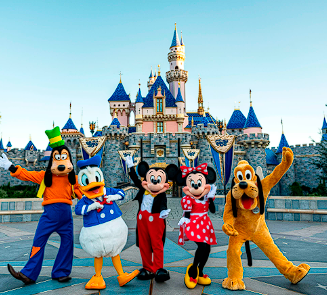
Mickey Mouse: The Enduring Icon of Animation
Mickey Mouse, the beloved mascot of The Walt Disney Company, is more than just a cartoon character. He’s an enduring symbol of optimism, joy, and the power of imagination. Since his creation in 1928, Mickey has captured the hearts of millions around the world and has become one of the most recognizable and beloved characters in pop culture. Let’s dive into the story of the iconic Mickey Mouse.

The Birth of an Icon:
Mickey Mouse made his debut in the animated short film “Steamboat Willie,” which premiered on November 18, 1928. Created by Walt Disney and Ub Iwerks, Mickey was originally conceived as a replacement for Disney’s earlier character, Oswald the Lucky Rabbit, after Disney lost the rights to Oswald. Walt was determined to create a new character that he owned outright, and thus, Mickey Mouse was born.
With his cheerful personality, big ears, and signature red shorts, Mickey quickly became a sensation. Audiences were captivated by his mischievous antics and his indomitable spirit. “Steamboat Willie” marked the beginning of a new era in animation and established Mickey as the face of Disney.
From Animation to Icon:
Throughout the 1930s, Mickey Mouse starred in a series of successful animated shorts, including “Plane Crazy,” “The Gallopin’ Gaucho,” and “The Karnival Kid.” These cartoons showcased Mickey’s versatility as a character, as he tackled various roles and adventures with his friends Minnie Mouse, Donald Duck, Goofy, and Pluto.
In 1935, Mickey made his first foray into color animation with the short film “The Band Concert,” further solidifying his status as a cultural phenomenon. He became more than just a character; he was a symbol of hope and resilience during the Great Depression, providing joy and laughter to audiences during difficult times.
Mickey’s Influence Spreads:
As Mickey’s popularity grew, so did his influence beyond the realm of animation. He appeared in comic strips, merchandise, and even inspired his own theme parks and television shows. “The Mickey Mouse Club,” which debuted in 1955, introduced Mickey to a new generation of fans and cemented his status as an enduring icon of childhood.
In the decades that followed, Mickey continued to evolve while retaining his timeless charm. He starred in feature-length films such as “Fantasia,” “Mickey’s Christmas Carol,” and “The Prince and the Pauper,” further expanding his storytelling potential and solidifying his place in cinematic history.
A Global Phenomenon:
Today, Mickey Mouse is more than just a character—he’s a global ambassador for The Walt Disney Company and a symbol of joy and creativity for people of all ages. From his appearances in theme parks around the world to his presence on merchandise, television, and digital media, Mickey’s influence knows no bounds.
Despite nearly a century since his creation, Mickey Mouse remains as beloved as ever. His timeless appeal transcends generations, cultures, and languages, uniting people around the world in a shared love for this iconic character.
The Magic Continues:
As Mickey Mouse celebrates nearly a century of entertaining audiences, his legacy lives on as a testament to the enduring power of imagination and storytelling. Whether he’s embarking on a daring adventure or simply sharing a laugh with friends, Mickey reminds us all to embrace the magic within ourselves and to never stop believing in the power of dreams. After all, as Walt Disney himself once said, “I only hope that we never lose sight of one thing—that it was all started by a mouse.”
Reference: CHATGPT
Discovering Magic: Journey through Disneyland
Discovering the Magic: A Journey through Disneyland
Nestled in the heart of Anaheim, California, Disneyland stands as a beacon of enchantment and wonder, drawing millions of visitors from around the globe each year. Since its opening in 1955, this iconic theme park has been captivating guests of all ages with its blend of imagination, storytelling, and innovation. Let’s embark on a journey through the history, attractions, and enduring charm of Disneyland.
A Land of Dreams: The Birth of Disneyland
Conceived by Walt Disney as a place where families could escape the ordinary and immerse themselves in a world of fantasy, Disneyland opened its gates on July 17, 1955. Walt’s vision was to create a theme park unlike any other, one where guests could step into their favorite fairy tales, explore distant lands, and experience the magic of Disney animation.
The park was divided into themed “lands,” each offering its own unique atmosphere and attractions. Main Street, U.S.A. welcomed visitors with a nostalgic trip back in time to turn-of-the-century America, while Adventureland, Frontierland, Fantasyland, and Tomorrowland promised adventures beyond imagination.
Classic Attractions and Timeless Magic
From the moment guests step foot inside Disneyland, they are greeted by a wealth of iconic attractions that have become synonymous with the park’s legacy. In Fantasyland, visitors can board the whimsical “it’s a small world” boat ride, journey into the heart of a diamond mine on the exhilarating “Snow White’s Enchanted Wish,” or take flight with Peter Pan on the enchanting “Peter Pan’s Flight.”
Adventure seekers can explore the treacherous waters of the Jungle Cruise, embark on a swashbuckling adventure with Pirates of the Caribbean, or traverse the perilous peaks of the Matterhorn Bobsleds. Meanwhile, in Tomorrowland, guests can blast off to outer space on Space Mountain, pilot their own spacecraft on Astro Orbiter, or explore the galaxy at Star Wars: Galaxy’s Edge.
Evolution and Expansion
Over the years, Disneyland has evolved and expanded, introducing new attractions, lands, and experiences while preserving the timeless charm that has made it a beloved destination for generations. In 2001, Disney California Adventure Park opened adjacent to Disneyland, offering a celebration of California’s rich history and culture.
Recent additions, such as Star Wars: Galaxy’s Edge and Pixar Pier, have further enhanced the park’s offerings, immersing guests in the worlds of their favorite films and characters like never before. Whether building a droid in Black Spire Outpost or racing through the Incredicoaster, Disneyland continues to push the boundaries of imagination and storytelling.
The Magic Lives On
As Disneyland approaches its 70th anniversary, its magic shows no signs of fading. Generations of families have made cherished memories within its gates, from first-time visits with wide-eyed children to nostalgic returns for adults who grew up with the park. Disneyland’s enduring appeal lies in its ability to transport guests to a world where dreams come true, where the magic of childhood is celebrated, and where anything is possible.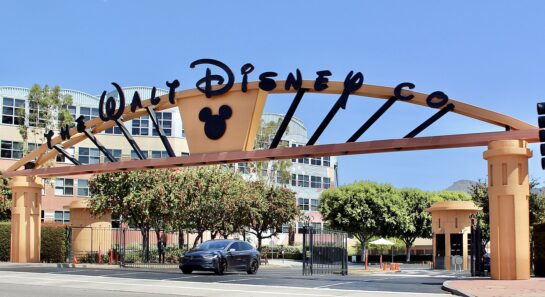
In a fast-paced world filled with technological marvels and digital distractions, Disneyland remains a beacon of innocence, joy, and wonder—a place where the young and the young at heart can come together to laugh, play, and create memories that will last a lifetime. As Walt Disney himself once said, “Disneyland will never be completed. It will continue to grow as long as there is imagination left in the world.” And so, the magic of Disneyland lives on, inspiring dreamers and believers for generations to come.
WALT DISNEY COMPANY (THE) Company Details

Company Profile
Chart
Company Financials
Company Founding History and Present Days
A Brief History of The Walt Disney Company: The Story of its Founder
The Walt Disney Company, one of the world’s most iconic entertainment conglomerates, has a rich and fascinating history that begins with its visionary founder, Walt Disney. From humble beginnings to global dominance, the company’s journey is not only a testament to Walt Disney’s creativity but also a reflection of his relentless pursuit of innovation and storytelling magic.
Early Years and Beginnings:
The story of The Walt Disney Company begins in 1923 when Walt Disney, along with his brother Roy O. Disney, founded the Disney Brothers Cartoon Studio in Los Angeles. They started their venture in the back of a small office in Hollywood, producing a series of short animated films featuring a character named Oswald the Lucky Rabbit. However, due to a contractual dispute over Oswald, Walt lost the rights to the character, prompting him to create a new character that would become synonymous with the Disney brand: Mickey Mouse.
The Birth of Mickey Mouse and the Rise of Disney:
In 1928, Walt Disney introduced the world to Mickey Mouse in the groundbreaking animated short film “Steamboat Willie.” Mickey’s instant popularity propelled Disney to new heights, and the company quickly expanded its operations, producing more animated shorts and introducing other beloved characters like Minnie Mouse, Donald Duck, and Goofy.
Throughout the 1930s and 1940s, Disney continued to innovate, releasing its first full-length animated feature, “Snow White and the Seven Dwarfs,” in 1937. The film was a massive success, paving the way for classics like “Pinocchio,” “Fantasia,” and “Bambi.” Disney’s commitment to quality animation and storytelling set it apart from other studios, solidifying its reputation as a leader in the industry.
Diversification and Expansion:
In the following decades, Disney diversified its portfolio, venturing into television with shows like “The Mickey Mouse Club” and “Disneyland,” which later inspired the creation of Disneyland Park in Anaheim, California, in 1955. The theme park’s success led to the development of Walt Disney World Resort in Florida, which opened in 1971, followed by parks around the world.
Under Walt Disney’s leadership, the company continued to innovate, exploring new technologies and storytelling mediums. The release of “Mary Poppins” in 1964 showcased Disney’s ability to blend live-action and animation seamlessly, while projects like “The Jungle Book” and “101 Dalmatians” demonstrated its commitment to traditional animation.
Legacy and Beyond:
Tragically, Walt Disney passed away in 1966, but his legacy lived on through the company he founded. Under the guidance of his brother Roy and a team of talented executives, The Walt Disney Company continued to thrive, expanding into new areas such as film production, television networks, and consumer products.
In the late 20th and early 21st centuries, Disney’s acquisition of Pixar Animation Studios, Marvel Entertainment, and Lucasfilm Ltd. further solidified its position as a global entertainment powerhouse. The company’s diverse portfolio of brands and franchises, including Pixar’s “Toy Story,” Marvel’s “The Avengers,” and “Star Wars,” ensures its relevance across generations and cultures.
Today, The Walt Disney Company stands as a symbol of imagination, creativity, and innovation, with a legacy that spans nearly a century. From its humble beginnings as a small animation studio to its current status as a multinational conglomerate, Disney’s story is a testament to the power of storytelling and the enduring magic of imagination. Walt Disney’s vision continues to inspire millions around the world, reminding us that with a little faith, trust, and pixie dust, anything is possible.
Reference: CHATGPT
NEWS
PayPal Company Details and History

The History and Founding Days of PayPal: Revolutionizing Online Payments
In the vast landscape of e-commerce and digital finance, PayPal stands out as a trailblazer, revolutionizing online payments and shaping the way we transact on the internet. From its humble beginnings to becoming a global household name, the history of PayPal is a fascinating journey of innovation, entrepreneurship, and disruption.

The Genesis: Confinity and X.com
PayPal’s story traces back to the late 1990s when two companies, Confinity and X.com, laid the groundwork for what would become one of the world’s leading online payment platforms. Confinity, founded by Max Levchin, Peter Thiel, and Luke Nosek in December 1998, initially focused on developing security software for handheld devices. However, the team soon realized the potential of their technology in facilitating online payments.
Around the same time, Elon Musk founded X.com in March 1999 with the vision of creating an internet-based financial services company. X.com started as an online bank but soon expanded its services to include email payments. Recognizing the synergy between their respective ventures, Confinity and X.com merged in March 2000, with the combined entity retaining the name X.com.
The Birth of PayPal
The merger of Confinity and X.com marked the birth of PayPal as we know it today. Under the leadership of Elon Musk, the company pivoted its focus to online payments, aiming to provide a secure and convenient solution for individuals and businesses to send and receive money digitally.
In October 2000, the company officially rebranded as PayPal, a name that symbolized its mission to facilitate payments via email – “Pay, Pal” – emphasizing the simplicity and friendliness of the service. PayPal’s innovative approach allowed users to link their accounts to email addresses, enabling seamless money transfers between individuals and merchants.
Rapid Growth and Expansion
With its user-friendly interface and robust security features, PayPal quickly gained traction in the burgeoning e-commerce market. The platform’s ease of use appealed to both consumers and businesses, driving rapid adoption and growth.
One of PayPal’s key strategies for expansion was its aggressive marketing campaigns and partnerships. The company incentivized users to sign up by offering referral bonuses and promotions, fueling its user base and cementing its position as the leading online payment solution.
In 2002, eBay, the world’s largest online marketplace, acquired PayPal for $1.5 billion, recognizing the synergies between the two platforms. The integration of PayPal into eBay’s checkout process further accelerated its growth, as millions of eBay users embraced the convenience and security of PayPal for their transactions.
Challenges and Innovations
Despite its success, PayPal faced numerous challenges along the way, including regulatory hurdles, security concerns, and competition from traditional financial institutions. However, the company’s relentless focus on innovation and customer satisfaction allowed it to overcome these obstacles and maintain its leadership in the industry.
In 2008, PayPal introduced its mobile payment solution, enabling users to send and receive money using their smartphones. This move capitalized on the growing trend of mobile commerce and positioned PayPal as a pioneer in the space.
In subsequent years, PayPal continued to innovate, launching features such as PayPal Here (a mobile card reader for small businesses), One Touch (a frictionless checkout experience), and Venmo (a peer-to-peer payment app targeting younger users). These innovations further diversified PayPal’s offerings and solidified its position as a fintech powerhouse.
Conclusion: A Legacy of Innovation
From its humble beginnings as a startup to its status as a global payments giant, PayPal’s journey has been nothing short of remarkable. The company’s founders, along with visionary leaders like Elon Musk, have reshaped the way we conduct financial transactions online, paving the way for the digital economy of the future.
As PayPal continues to innovate and expand its reach, its founding principles of simplicity, security, and convenience remain at the core of its success. With an ever-evolving landscape of technology and consumer behavior, PayPal is poised to continue shaping the future of payments for years to come.
Referance: CHATGPT
CHART
Company Financials
Company Profile
Company News
NATO: New Challenges in a Changing World

NATO: Adapting to New Challenges in a Changing World
Since its inception in 1949, the North Atlantic Treaty Organization (NATO) has been a cornerstone of international security, fostering peace and stability in the Euro-Atlantic region. Born out of the post-World War II landscape, NATO’s primary mission was to counter the Soviet threat and prevent the spread of communism. Over the years, its role has evolved to address a wide range of security challenges, from terrorism to cyber attacks. As the world continues to change, NATO faces new tests that require it to adapt and innovate to remain effective.
-
Origins and Evolution
NATO was established on April 4, 1949, with the signing of the North Atlantic Treaty by twelve founding member states. The treaty’s core principle was mutual defense: an attack on one member would be considered an attack on all. This collective defense mechanism was crucial during the Cold War, providing a deterrent against Soviet aggression in Europe.
The end of the Cold War brought significant changes to NATO’s role. With the collapse of the Soviet Union, the alliance faced questions about its relevance. However, instead of disbanding, NATO adapted. It expanded its membership, welcoming former Warsaw Pact countries and former Soviet republics into its fold. This enlargement not only contributed to the stability and security of Central and Eastern Europe but also reinforced NATO’s role as a guarantor of peace on the continent.
-
New Challenges
In the post-9/11 era, NATO’s focus shifted beyond its traditional Euro-Atlantic area. The alliance invoked Article 5 for the first time in its history in response to the terrorist attacks on the United States, leading to the deployment of NATO forces in Afghanistan. This marked a significant expansion of NATO’s mission into counter-terrorism and stabilization operations.
Furthermore, NATO has had to confront new challenges in the realm of cybersecurity and hybrid warfare. Cyber attacks and disinformation campaigns pose threats to member states’ security and undermine public trust. NATO has responded by developing capabilities to defend against cyber threats and enhancing cooperation with partners in the cyber domain.
-
Adapting for the Future
As the world faces increasingly complex security challenges, NATO must continue to adapt. One of the key areas of focus is the modernization of military capabilities. This includes investments in emerging technologies such as artificial intelligence, autonomous systems, and space capabilities. By staying at the forefront of technological innovation, NATO can maintain its military edge and deter potential adversaries.
Additionally, NATO is reaffirming its commitment to collective defense while also deepening partnerships with like-minded countries and organizations. This includes cooperation with the European Union, the United Nations, and other regional security bodies. By working together, NATO and its partners can address common threats more effectively and promote stability in their respective regions.
-
Challenges Ahead
Despite its successes, NATO faces several challenges that require careful navigation. One such challenge is the resurgence of great power competition, particularly with Russia and China. Managing relations with these powers while upholding NATO’s principles of collective defense and deterrence is a delicate balancing act.
Another challenge is maintaining unity among member states, especially in the face of differing threat perceptions and geopolitical interests. NATO’s decision-making process relies on consensus among its members, making it essential to bridge any divides and find common ground on key issues.
-
Conclusion
As the world evolves, so too must NATO. From its origins as a defense alliance against the Soviet Union to its current role in addressing terrorism, cyber threats, and hybrid warfare, NATO has demonstrated its ability to adapt to new challenges. By modernizing its capabilities, strengthening partnerships, and maintaining unity among member states, NATO can continue to fulfill its mission of preserving peace and security in the Euro-Atlantic area and beyond.
Referance: CHATGPT
Boeing Company- Leading Aircraft Company

SYMBOL DETAIL
Company Details
Boeing: A Journey Through History and Present
From humble beginnings in a Seattle boathouse to becoming one of the world’s leading aerospace companies, Boeing has left an indelible mark on the history of aviation. Founded in 1916 by William Boeing, the company has played a pivotal role in shaping the aviation industry, from pioneering commercial jet travel to venturing into space exploration. Let’s delve into the fascinating journey of Boeing from its inception to its present-day achievements.
Early Years and Milestones
Boeing’s journey began with its first aircraft, the B&W seaplane, which took flight in 1916. However, it was during World War I that the company gained prominence by producing military aircraft such as the Model C and the MB-3. Post-war, Boeing shifted its focus to commercial aviation, introducing models like the Boeing 247, which revolutionized air travel with its all-metal construction and efficient design.
The company’s breakthrough came in 1958 with the launch of the Boeing 707, the world’s first commercially successful jetliner. This iconic aircraft not only transformed air travel but also laid the foundation for Boeing’s dominance in the commercial aviation market. Subsequent models like the 727, 737, 747, and 757 further solidified Boeing’s position as a global leader in aviation technology.
Expanding Horizons
Boeing’s innovation wasn’t confined to commercial aviation; it also ventured into defense and space exploration. The development of the B-17 Flying Fortress during World War II marked Boeing’s entry into military aircraft manufacturing. This was followed by the B-52 Stratofortress and the iconic B-29 Superfortress, which dropped the atomic bombs on Hiroshima and Nagasaki.
In the 1960s, Boeing answered President Kennedy’s call to put a man on the moon by playing a crucial role in the Apollo program. The company’s Saturn V rocket powered the historic Apollo 11 mission, landing the first humans on the lunar surface in 1969.

Challenges and Triumphs in the Modern Era
Despite its historical successes, Boeing has faced significant challenges in the modern era. The company experienced setbacks with the development of the Boeing 787 Dreamliner, including production delays and technical issues. However, the Dreamliner eventually became one of the most advanced and fuel-efficient commercial aircraft in the world, showcasing Boeing’s ability to overcome adversity and innovate.
In recent years, Boeing faced unprecedented challenges with the grounding of its 737 MAX fleet following two tragic crashes. The incidents led to intense scrutiny of the company’s safety protocols and management practices. Boeing has since worked tirelessly to address the issues, implementing changes to ensure the safety of its aircraft and restore public trust.
Present-Day Achievements and Future Prospects
Today, Boeing continues to push the boundaries of aerospace technology. The company’s portfolio includes a wide range of commercial aircraft, military platforms, and space systems. Its 777X and 737 MAX series remain popular choices among airlines worldwide, while the Boeing 787 Dreamliner continues to set new standards for efficiency and passenger comfort.
Boeing’s defense division remains a key player in military aviation, providing advanced fighter jets, surveillance aircraft, and missile defense systems to governments around the world. Additionally, the company is actively involved in space exploration, with projects like the CST-100 Starliner spacecraft aimed at ferrying astronauts to the International Space Station.
Looking ahead, Boeing is focused on sustainable aviation, exploring alternative fuels and advanced propulsion systems to reduce emissions and environmental impact. The company is also investing in autonomous and electric aircraft technologies, anticipating the future needs of the aviation industry.
Conclusion
Boeing’s journey from a small aircraft manufacturer to a global aerospace giant is a testament to human ingenuity and innovation. Throughout its storied history, the company has faced numerous challenges but has always emerged stronger and more resilient. As it continues to pioneer the future of flight, Boeing remains committed to pushing boundaries, driving progress, and shaping the world of aviation for generations to come.
Referance : CHATGPT
CHART
Company Financials
Company News
New York Stock Exchange (NYSE)

The New York Stock Exchange (NYSE) is one of the world’s largest and most prestigious stock exchanges, located on Wall Street in New York City. Here are some details about the NYSE:
Overview:
- Founded: The NYSE was founded in 1792 when 24 stockbrokers signed the Buttonwood Agreement under a buttonwood tree on Wall Street.
- Location: New York Stock Exchange is headquartered at 11 Wall Street, New York City.
-
Ownership: The NYSE is owned by Intercontinental Exchange (ICE), which acquired it in 2013.

Operations:
- Trading Hours: The NYSE operates Monday through Friday, with trading hours from 9:30 AM to 4:00 PM Eastern Time.
- Trading Mechanism: The NYSE operates as an auction-based market where buyers and sellers trade stocks on the exchange floor. It employs a combination of electronic trading and traditional open outcry methods.
- Listings: The NYSE lists a wide range of companies, including large multinational corporations, mid-sized firms, and newly issued initial public offerings (IPOs).
Key Features:
- Bell Ringing: Opening and closing trading sessions at the NYSE are traditionally marked by ringing a bell. Celebrities, corporate executives, and dignitaries often participate in these ceremonies.
- Market Indices: The NYSE is home to several major market indices, including the Dow Jones Industrial Average (DJIA) and the S&P 500 Index.
- Regulation: The NYSE is regulated by the U.S. Securities and Exchange Commission (SEC) and self-regulatory organizations such as the Financial Industry Regulatory Authority (FINRA).
Technology:
- Trading Platforms: The NYSE has modernized its trading operations with electronic trading platforms while still maintaining the iconic trading floor.
- Data Services: The NYSE provides market data and analytics to investors, traders, and financial institutions through various data products and services.
Historical Events:
- Black Thursday (1929): The NYSE experienced a significant stock market crash on October 24, 1929, which contributed to the Great Depression.
- September 11 Attacks (2001): The NYSE was closed for several days following the terrorist attacks on September 11, 2001, reopening on September 17, 2001.
- Financial Crisis (2008): During the global financial crisis, the NYSE played a central role in the financial turmoil that led to market volatility and regulatory changes.
Modern Developments:
- Technology and Innovation: The NYSE has embraced technology and innovation, introducing electronic trading platforms and exploring blockchain technology for settlement and other applications.
- Global Expansion: The NYSE has expanded its global presence through partnerships and acquisitions, enabling it to attract listings from companies around the world.
The NYSE continues to be a vital institution in global finance, facilitating the trading of billions of dollars’ worth of securities daily and serving as a barometer for the health of the financial markets.
Referance: CHATGPT
Coca-Cola-Company Details and Profile

Company Details
CHART
COMPANY FINACIALS
NEWS
The Coca-Cola Company is a multinational corporation known for its production, retailing, and marketing of nonalcoholic beverage concentrates and syrups. Here are some details about the company:
Overview:
- Founded: The Coca-Cola Company was founded in 1892.
- Headquarters: Atlanta, Georgia, United States.
- CEO: As of my last update, James Quincey was the CEO. However, it’s a good idea to verify whether there have been any changes since then.
- Products: The company offers a wide range of beverages, including Coca-Cola, Diet Coke, Sprite, Fanta, Minute Maid, Powerade, and many others. It also has a portfolio of over 500 brands spanning sparkling beverages, water, juice, sports drinks, energy drinks, and ready-to-drink coffees and teas.

Financials:
- Revenue: The Coca-Cola Company generates billions of dollars in revenue annually, making it one of the largest beverage companies in the world.
- Market Cap: Its market capitalization typically ranks it among the largest companies globally.
Operations:
- Global Presence: The company operates in more than 200 countries worldwide, making it one of the most globally recognized brands.
- Bottling Partners: Coca-Cola operates a franchised distribution system dating back to 1889, where it manufactures syrup concentrate and sells it to various bottlers worldwide, which then produce the final beverage product in bottles and cans.
Sustainability and Corporate Responsibility:
- Coca-Cola has made efforts toward sustainability, including commitments to water stewardship, packaging recycling, and reducing environmental impact.
Recent Developments:
- The company has been investing in innovation, introducing new products such as Coca-Cola Zero Sugar, Coca-Cola Energy, and expanding its portfolio to include healthier options and beverages tailored to specific markets.
Challenges:
- Like many large corporations, Coca-Cola faces challenges related to health concerns over sugary drinks, changing consumer preferences, and environmental sustainability.
For the most current and detailed information, it’s recommended to visit the Coca-Cola Company’s official website or refer to their latest financial reports and press releases.
REFERANCE:CHATGPT
Robert Noyce- FOUNDER OF INTEL
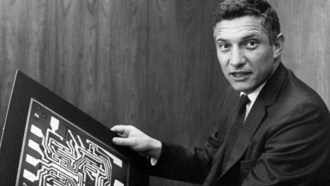
 Robert Noyce was an American physicist, inventor, and entrepreneur who played a crucial role in the development of the integrated circuit, which revolutionized the electronics industry. Born on December 12, 1927, in Burlington, Iowa, Noyce grew up to become one of the key figures in Silicon Valley.
Robert Noyce was an American physicist, inventor, and entrepreneur who played a crucial role in the development of the integrated circuit, which revolutionized the electronics industry. Born on December 12, 1927, in Burlington, Iowa, Noyce grew up to become one of the key figures in Silicon Valley.
Noyce co-founded Fairchild Semiconductor in 1957, where he worked on the development of the integrated circuit along with his colleague Jack Kilby, who was working independently at Texas Instruments. In 1968, Noyce co-founded Intel Corporation with Gordon Moore and Andy Grove. Intel became a leading manufacturer of microprocessors and a key player in the computing revolution.
Often referred to as the “Mayor of Silicon Valley,” Noyce was known for his entrepreneurial spirit, his leadership style that fostered innovation, and his vision for the future of technology. He was also involved in various philanthropic activities and initiatives to promote science education.
Noyce’s contributions to the semiconductor industry earned him numerous honors, including the National Medal of Science in 1979. He passed away on June 3, 1990, but his legacy continues to influence technology and entrepreneurship to this day.
HIS BIOGRAPHY : WIKIPEDIA
Intel Corporation – INTEL(COMPANY AND DETAILS )
Watch Out THIS VIDEO
COMPANY PROFILE
CHART
COMPANY FINANCIALS
COMPANY BOARD OF DIRECTOR
NEWS
COMPANY DESCRIPTION
 Intel Corporation, headquartered in Santa Clara, California, USA, stands as one of the leading pioneers in the global technology industry. Established on July 18, 1968, by semiconductor pioneers Robert Noyce and Gordon Moore, along with the charismatic venture capitalist Arthur Rock, Intel has shaped the world of computing with its relentless pursuit of innovation.The company’s founding history dates back to the era of the semiconductor boom in Silicon Valley. Noyce and Moore, both previously of Fairchild Semiconductor, envisioned a new kind of semiconductor company—one that would not only produce semiconductors but also develop innovative technologies. With Rock’s financial backing, they founded Intel, which was initially focused on producing semiconductor memory chips.Intel made its mark in 1971 with the introduction of the world’s first microprocessor, the Intel 4004. This groundbreaking invention laid the foundation for modern computing, revolutionizing industries and shaping the way people work and live. It was a pivotal moment that showcased Intel’s commitment to pushing the boundaries of technology.Throughout its history, Intel has remained at the forefront of innovation, consistently introducing new advancements in microprocessor technology.
Intel Corporation, headquartered in Santa Clara, California, USA, stands as one of the leading pioneers in the global technology industry. Established on July 18, 1968, by semiconductor pioneers Robert Noyce and Gordon Moore, along with the charismatic venture capitalist Arthur Rock, Intel has shaped the world of computing with its relentless pursuit of innovation.The company’s founding history dates back to the era of the semiconductor boom in Silicon Valley. Noyce and Moore, both previously of Fairchild Semiconductor, envisioned a new kind of semiconductor company—one that would not only produce semiconductors but also develop innovative technologies. With Rock’s financial backing, they founded Intel, which was initially focused on producing semiconductor memory chips.Intel made its mark in 1971 with the introduction of the world’s first microprocessor, the Intel 4004. This groundbreaking invention laid the foundation for modern computing, revolutionizing industries and shaping the way people work and live. It was a pivotal moment that showcased Intel’s commitment to pushing the boundaries of technology.Throughout its history, Intel has remained at the forefront of innovation, consistently introducing new advancements in microprocessor technology.
The company’s “Intel Inside” marketing campaign, launched in 1991, became one of the most successful branding initiatives in the tech industry, cementing Intel’s reputation as a household name synonymous with computing power and reliability.Over the years, Intel has diversified its product portfolio to include a wide range of technologies beyond microprocessors. This includes memory solutions, graphics processing units (GPUs), and connectivity solutions, enabling it to cater to the evolving needs of the market.However, Intel’s journey has not been without challenges. The company has faced fierce competition from rivals such as AMD and Nvidia, prompting it to continually innovate and adapt to stay ahead in the highly competitive semiconductor industry.Despite these challenges, Intel has remained resilient, leveraging its decades of expertise and resources to drive progress in areas such as artificial intelligence, autonomous driving, and 5G connectivity. The company’s commitment to research and development ensures that it remains a key player in shaping the future of technology.As Intel continues to evolve, its founding principles of innovation, excellence, and collaboration remain deeply ingrained in its culture. With a rich history of pioneering achievements and a relentless drive for innovation, Intel Corporation stands poised to continue shaping the future of computing and technology for decades to come.
VISIT WEBSITE:INTEL
Tan Hock Eng- CEO of Broadcom
Tan Hock Eng: Leading Broadcom to Technological Excellence
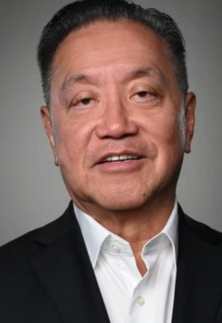 Tan Hock Eng, the President and CEO of Broadcom Inc., is a visionary leader known for his strategic acumen, innovation, and commitment to driving the company to new heights. Under his leadership, Broadcom has solidified its position as a global leader in semiconductor and infrastructure software products, delivering cutting-edge solutions that power the digital world.
Tan Hock Eng, the President and CEO of Broadcom Inc., is a visionary leader known for his strategic acumen, innovation, and commitment to driving the company to new heights. Under his leadership, Broadcom has solidified its position as a global leader in semiconductor and infrastructure software products, delivering cutting-edge solutions that power the digital world.
Early Career and Rise to CEO
Tan Hock Eng’s journey to the top of Broadcom began with a strong foundation in engineering and business. He earned his Bachelor of Science degree in Electrical and Electronics Engineering from the University of London, followed by an MBA from Harvard Business School. With this solid educational background, he embarked on a successful career in the technology industry.
Hock Eng joined Broadcom in 2006 as Executive Vice President of Global Operations and served in various executive roles before being appointed President and CEO in 2016. His deep understanding of the company’s operations, combined with his strategic vision, made him the natural choice to lead Broadcom into its next phase of growth.
Strategic Leadership and Vision
At the helm of Broadcom, Tan Hock Eng has steered the company through significant milestones and transformations. Under his leadership, Broadcom has expanded its product portfolio, completed strategic acquisitions, and diversified its revenue streams. Hock Eng’s strategic foresight has positioned Broadcom as a key player in critical markets such as data center, networking, wireless, and industrial sectors.
Driving Innovation and Growth
Tan Hock Eng is committed to fostering a culture of innovation within Broadcom. He understands the importance of investing in research and development to stay ahead of the curve in an increasingly competitive industry. Under his guidance, Broadcom has continued to deliver breakthrough technologies that address the evolving needs of customers and drive growth for the company.
Navigating Challenges with Resilience
Despite facing challenges such as regulatory scrutiny and market volatility, Tan Hock Eng has demonstrated resilience and agility in leading Broadcom. His ability to adapt to changing circumstances, make tough decisions, and navigate complex issues has earned him respect both within the company and the broader industry.
Commitment to Corporate Responsibility
Beyond his responsibilities as CEO, Tan Hock Eng is dedicated to corporate responsibility and giving back to the community. Under his leadership, Broadcom has implemented initiatives to promote diversity and inclusion, support environmental sustainability, and contribute to philanthropic causes.
Conclusion
Tan Hock Eng’s leadership has been instrumental in driving Broadcom’s success and cementing its position as a global technology powerhouse. With his strategic vision, commitment to innovation, and focus on corporate responsibility, he continues to guide Broadcom on a path of growth, excellence, and positive impact in the world of technology. Under his guidance, Broadcom remains at the forefront of shaping the future of the digital era.
California: The Golden State
 California: The Golden State
California: The Golden State
California, often referred to as “The Golden State,” is a land of contrasts, diversity, and innovation. Situated on the western coast of the United States, California is the most populous state in the country and boasts the world’s fifth-largest economy if it were a nation on its own. From its stunning natural landscapes to its vibrant cities and groundbreaking industries, California holds a special place in the hearts and minds of people around the world.
Natural Beauty and Geography
California’s geography is as diverse as its population. From the iconic coastline of the Pacific Ocean to the towering peaks of the Sierra Nevada Mountains, the state offers a wealth of natural wonders. In the north, the lush forests of the Redwood National and State Parks are home to some of the tallest trees on earth, while the central valley is a fertile agricultural region known as “America’s Breadbasket.” In the south, the Mojave Desert stretches out with its unique landscapes and Joshua trees.
Cities and Culture
California is home to some of the world’s most famous cities, each with its own unique character and culture. Los Angeles, the entertainment capital of the world, is a sprawling metropolis known for Hollywood, its diverse neighborhoods, and its vibrant arts scene. San Francisco, with its iconic Golden Gate Bridge and steep streets, is a hub of technology, innovation, and progressive culture. Silicon Valley, located in the southern part of the San Francisco Bay Area, is the birthplace of many of the world’s most influential technology companies.
Economic Powerhouse
California’s economy is incredibly diverse, with major industries including technology, entertainment, agriculture, tourism, and aerospace. Silicon Valley, home to companies like Apple, Google, and Facebook, drives innovation and technological advancement on a global scale. Hollywood dominates the entertainment industry, producing movies, television shows, and music that are enjoyed around the world. The state’s agricultural output is vast, supplying a significant portion of the nation’s fruits, vegetables, and nuts.
Challenges and Opportunities
While California offers many opportunities, it also faces significant challenges. The state is prone to natural disasters such as wildfires, earthquakes, and droughts, exacerbated by climate change. Issues like housing affordability, homelessness, and income inequality are persistent challenges, particularly in major cities. However, California continues to lead the way in environmental protection, social progress, and technological innovation.
Conclusion
California’s allure lies in its diversity, innovation, and natural beauty. From the rugged coastline to the bustling cities, it captures the imagination of people from all walks of life. As “The Golden State” continues to evolve, it remains a beacon of opportunity and progress, shaping the future not only of America but of the world.
Avago
 Broadcom Inc. is an American multinational company known for its diverse portfolio of semiconductor and infrastructure software products. Serving markets such as data center, networking, software, broadband, wireless, storage, and industrial sectors, Broadcom is a global supplier of technology solutions. As of 2023, the company derived 79 percent of its revenue from semiconductor-based products and 21 percent from infrastructure software products and services.
Broadcom Inc. is an American multinational company known for its diverse portfolio of semiconductor and infrastructure software products. Serving markets such as data center, networking, software, broadband, wireless, storage, and industrial sectors, Broadcom is a global supplier of technology solutions. As of 2023, the company derived 79 percent of its revenue from semiconductor-based products and 21 percent from infrastructure software products and services.
Led by President and CEO Tan Hock Eng, Broadcom is headquartered in Palo Alto, California. The company’s roots trace back to Avago Technologies Limited, which acquired the Broadcom Corporation name in January 2016. This merger led to the retirement of the Broadcom Corporation ticker symbol BRCM, with AVGO representing the newly merged entity. Initially known as Broadcom Ltd., the company later assumed its present name.
Despite its success, Broadcom has faced regulatory challenges. In October 2019, the European Union issued an interim antitrust order against the company, citing concerns about anticompetitive business practices. Despite this, Broadcom continues to expand its reach and offerings. In May 2022, it announced a landmark agreement to acquire VMware in a transaction valued at $69 billion. The acquisition was completed on November 22, 2023, further solidifying Broadcom’s position as a major player in the technology industry.
VISA – Company Changed the Money
Company profile
Visa Inc. is a global payments technology company that facilitates electronic funds transfers throughout the world. Here’s an overview of its history and profile:
History:
- 1958: Bank of America launched the BankAmericard, the first-ever consumer credit card program in the United States.
- 1970: The program expanded internationally, and other banks outside the U.S. began issuing BankAmericards under license.
- 1976: To manage the growing international presence, the company formed the Visa International Service Association.
- 2007: Visa went public with an initial public offering (IPO) on the New York Stock Exchange, making it a publicly traded company.
- 2008: Visa Inc. restructured, becoming a publicly traded company, while Visa Europe remained a separate entity.
- 2016: Visa Inc. completed its acquisition of Visa Europe, reuniting the two entities.

Profile:
- Core Business: Visa operates the world’s largest retail electronic payments network, enabling individuals, businesses, and governments to use digital currency. It facilitates electronic funds transfers through its network of branded credit, debit, and prepaid cards.
- Network: Visa’s network connects millions of merchants, financial institutions, and consumers worldwide. It processes transactions in multiple currencies, enabling purchases and payments across borders.
- Products and Services:
- Payment Processing: Visa provides payment processing services for credit, debit, and prepaid transactions.
- Digital Payments: It offers digital payment solutions, including mobile payments and digital wallets.
- Risk and Fraud Management: Visa provides services to help mitigate fraud and manage risk in electronic transactions.
- Data Analytics: Visa utilizes data analytics to provide insights into consumer spending habits and trends.
- Financial Inclusion: Visa works to expand access to financial services, particularly in underserved communities, through initiatives like Visa’s Financial Inclusion 2020 program.
- Global Reach: Visa operates in over 200 countries and territories, making it one of the most widely accepted payment networks in the world.
- Partnerships: Visa collaborates with banks, merchants, technology companies, and other stakeholders to innovate and expand its services.
- Innovation: Visa invests heavily in research and development to stay at the forefront of payment technology. It explores emerging technologies like blockchain and artificial intelligence to enhance its offerings.
- Corporate Social Responsibility: Visa is involved in various corporate social responsibility initiatives, including financial literacy programs and environmental sustainability efforts.
- Financial Performance: Visa consistently generates significant revenue and profit, driven by the increasing global shift towards electronic payments.
Visa’s role in the global payments ecosystem continues to evolve with advancements in technology and changes in consumer behavior, making it a key player in the digital economy.
Wikipedia
French Migration to USA

Title: French Migration to the USA: A Journey of Influence and Legacy
The migration of French people to the United States has been a significant chapter in both French and American history, shaping cultural, economic, and social landscapes on both sides of the Atlantic. From early explorers and settlers to modern-day immigrants, French migration has left a lasting imprint on the United States.

Early Explorers and Settlers
French exploration and settlement in North America began in the 16th century with explorers like Jacques Cartier and Samuel de Champlain, who claimed territory in what is now Canada and the northeastern United States. French fur traders, missionaries, and settlers established trading posts, forts, and colonies, laying the groundwork for French influence in the New World.
Louisiana Purchase and Creole Culture
The Louisiana Purchase in 1803 doubled the size of the United States and brought French-speaking settlers to the American Midwest and Gulf Coast. French Creole culture flourished in cities like New Orleans, where French, African, and Caribbean influences blended to create a unique cultural identity. Today, the legacy of French Louisiana is evident in its cuisine, music, and architecture.
Contributions to American Culture and Society
French immigrants and their descendants have made significant contributions to American culture, particularly in the arts, literature, and culinary traditions. French-American authors like Edith Wharton and Henry James helped shape American literature, while French cuisine, with its emphasis on fine dining and gastronomy, has influenced American culinary practices.
Influence on American Architecture
French architectural styles, such as the Beaux-Arts and Second Empire styles, have left their mark on American cities, particularly in public buildings, museums, and monuments. Landmarks like the Statue of Liberty, designed by French sculptor Frédéric Auguste Bartholdi, symbolize the enduring friendship between France and the United States.
Military Alliances and Partnerships
Throughout history, France and the United States have been allies in times of war and conflict. French military support was crucial during the American Revolutionary War, and France played a significant role in securing American independence. The enduring military partnership between the two countries continues to this day.
Modern-Day Immigration and Cultural Exchange
In the 19th and 20th centuries, waves of French immigrants arrived in the United States, seeking economic opportunity and political refuge. French-Americans settled in cities like New York, Boston, and San Francisco, contributing to the nation’s cultural diversity and economic growth. Today, French immigrants and expatriates continue to enrich American society in fields such as technology, business, and the arts.
Challenges and Achievements
French immigrants to the United States have faced challenges such as language barriers, discrimination, and cultural adaptation. Despite these obstacles, many French-Americans have achieved success and made significant contributions in various fields, from academia and science to business and the arts.
Conclusion
The French migration to the United States is a testament to the enduring ties between the two nations and the shared values of liberty, democracy, and cultural exchange. From the early explorers to the modern-day immigrants, French-Americans have played a vital role in shaping the diverse and dynamic tapestry of American society. Their legacy serves as a reminder of the power of immigration and the enduring bonds that connect people across borders and continents.
The English Migration to America: From Pilgrims to Pioneers
Title: The English Migration to America: From Pilgrims to Pioneers
The migration of English people to America is a pivotal chapter in the history of both nations, shaping the culture, politics, and identity of the United States. From the early settlers seeking religious freedom to the waves of immigrants in search of opportunity, English migration played a significant role in the development of the American colonies and, later, the United States as a nation.
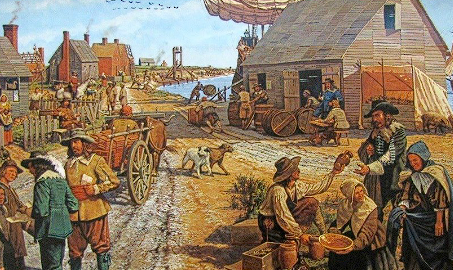
Pilgrims and Puritans: Seeking Religious Freedom
One of the earliest and most well-known waves of English migration to America occurred in the early 17th century with the arrival of the Pilgrims and Puritans. Seeking religious freedom and autonomy, groups like the Pilgrims settled in Plymouth, Massachusetts, in 1620, while the Puritans established the Massachusetts Bay Colony in 1630. These settlers laid the foundation for what would become the New England region of the United States, bringing with them traditions of self-governance and a strong Protestant ethic.
Colonial Expansion and Economic Opportunity
As the American colonies grew, English migration continued, driven by economic opportunities and the promise of land ownership. Many English settlers migrated to the middle and southern colonies, such as Virginia, Maryland, and the Carolinas, where they established tobacco plantations, farms, and trading enterprises. English settlers played a central role in the development of the colonial economy, contributing to the growth of industries like agriculture, shipping, and commerce.
Waves of Immigration: 19th and 20th Centuries
In the 19th and early 20th centuries, waves of English immigrants continued to arrive in the United States, drawn by industrialization, urbanization, and the lure of the American Dream. Many settled in cities like New York, Boston, and Chicago, where they found work in factories, mines, and other industries. English immigrants brought with them skills, traditions, and cultural influences that enriched American society.
Cultural Contributions and Influence
English migration to America had a profound impact on the cultural landscape of the United States. English settlers brought with them the English language, legal traditions, and political institutions that formed the basis of American governance. They also influenced American cuisine, architecture, literature, and customs, leaving an enduring legacy that is still evident today.
Assimilation and Integration
Over time, English immigrants assimilated into American society while also contributing to its diversity and richness. While many retained a strong sense of English identity and heritage, they also embraced their new homeland and participated fully in its political, social, and economic life. English migration played a crucial role in shaping the melting pot of cultures that defines the United States.
Conclusion
The migration of English people to America has been a dynamic and multifaceted phenomenon that has shaped the course of both nations’ histories. From the early settlers seeking religious freedom to the waves of immigrants in search of economic opportunity, English migration has left an indelible mark on American society and culture. Today, the legacy of English migration to America endures in the traditions, institutions, and values that define the United States as a nation.
Cold War History and Overview
Title: The Cold War: A Clash of Ideologies That Defined a Generation
The Cold War, spanning from the late 1940s to the early 1990s, was a period of intense geopolitical tension between the United States and its Western allies and the Soviet Union and its Eastern Bloc allies. Characterized by ideological rivalry, military build-up, and proxy conflicts, the Cold War shaped the world order and left a lasting impact on global politics.
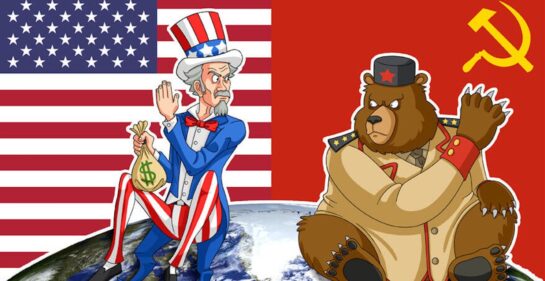
Origins of the Cold War:
The roots of the Cold War can be traced back to the aftermath of World War II. While the United States and the Soviet Union had been allies in the fight against Nazi Germany, their relationship quickly soured due to fundamental ideological differences. The U.S. promoted capitalism and democracy, while the Soviet Union advocated for communism and authoritarianism.
The Truman Doctrine and Containment:
The beginning of the Cold War is often marked by the announcement of the Truman Doctrine in 1947. In response to Soviet expansionism in Eastern Europe, President Harry Truman pledged to contain communism and provide economic and military aid to countries threatened by Soviet influence. This policy of containment became the cornerstone of U.S. foreign policy throughout the Cold War.
The Marshall Plan and the Division of Europe:
To rebuild war-torn Europe and prevent the spread of communism, the United States implemented the Marshall Plan in 1948, providing billions of dollars in economic assistance to Western European countries. In response, the Soviet Union established the Eastern Bloc and imposed communist governments in Eastern Europe. The division of Europe into East and West set the stage for decades of confrontation and competition.
Nuclear Arms Race and Détente:
The Cold War was characterized by a nuclear arms race between the United States and the Soviet Union, leading to the development of increasingly powerful and destructive weapons. Both sides amassed huge arsenals of nuclear weapons, leading to the doctrine of mutually assured destruction (MAD), which deterred direct military conflict.
Despite the tension, there were periods of détente, or relaxation of tensions, during the Cold War. This was marked by diplomatic efforts to reduce the risk of nuclear war, such as the Strategic Arms Limitation Talks (SALT) and the Helsinki Accords, which aimed to promote human rights and cooperation between East and West.
Proxy Conflicts and the Spread of Communism:
While direct military confrontation between the United States and the Soviet Union was avoided, the Cold War was characterized by numerous proxy conflicts in regions such as Korea, Vietnam, and Latin America. These conflicts saw the U.S. and Soviet Union supporting opposing sides, often with devastating consequences for the countries involved.
Collapse of the Soviet Union and End of the Cold War:

The Cold War came to an abrupt end in the late 1980s and early 1990s with the collapse of the Soviet Union and the Eastern Bloc. Economic stagnation, internal dissent, and the reforms of Soviet leader Mikhail Gorbachev, such as glasnost (openness) and perestroika (restructuring), contributed to the dissolution of communist regimes across Eastern Europe.
In 1991, the Soviet Union officially dissolved, marking the end of the Cold War era. The United States emerged as the sole superpower, but the post-Cold War world brought new challenges, including the proliferation of weapons of mass destruction, ethnic conflicts, and the rise of non-state actors.
Legacy of the Cold War:
The Cold War left a profound legacy on global politics, shaping alliances, ideologies, and international relations for decades to come. It divided the world into competing blocs, influenced domestic policies and public discourse, and left a lasting impact on the psyche of generations who lived through it.
While the Cold War formally ended, its echoes can still be felt in contemporary geopolitics, as tensions between the United States and Russia persist, and the specter of nuclear conflict remains a concern. Understanding the complexities of the Cold War era is essential for grasping the dynamics of the modern world and navigating the challenges of the 21st century.
Referance:Chatgpt
USA-History and Present Condition
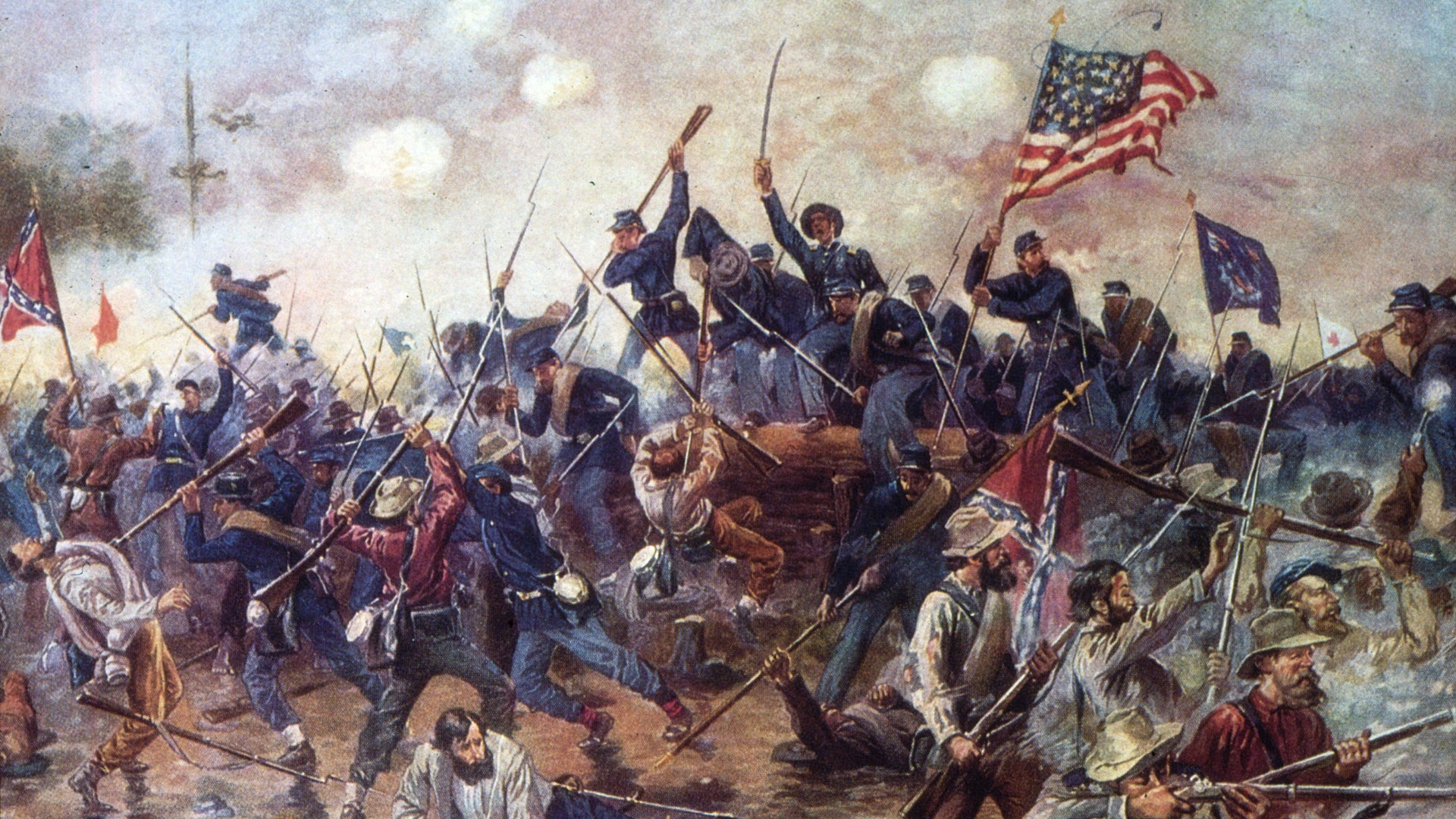
Title: The History and Present Condition of the United States: A Journey Through Time
The United States of America, a nation forged through the struggles of colonization, revolution, and continual evolution, has a rich and complex history that has shaped its present condition. From the arrival of European settlers to its current status as a global superpower, the United States has undergone significant transformations politically, socially, and economically.

Colonial Roots:
The history of the United States traces back to the early 17th century when European settlers began to establish colonies along the eastern seaboard. These colonies, primarily founded by the English, Dutch, French, and Spanish, were characterized by diverse economies and cultures. The colonial period was marked by tensions between the settlers and Native American populations, as well as conflicts among European powers vying for control over North America.
Revolutionary Spirit:
The American Revolutionary War (1775-1783) marked a turning point in American history, as the thirteen British colonies fought for independence. With the signing of the Declaration of Independence in 1776, the United States declared itself a sovereign nation, free from British rule. The war culminated in the Treaty of Paris in 1783, recognizing the independence of the United States and establishing its boundaries.
Nation-Building and Expansion:
Following independence, the United States embarked on a period of nation-building and westward expansion. The Louisiana Purchase in 1803 doubled the size of the young nation, and subsequent territorial acquisitions and conflicts with Native American tribes led to the expansion of the United States across the continent. However, this expansion came at the expense of indigenous peoples and fueled tensions over slavery, which ultimately led to the Civil War.
Civil War and Reconstruction:
The Civil War (1861-1865) was a defining moment in American history, pitting the industrialized North against the agrarian South over issues of slavery and states’ rights. The Union victory led to the abolition of slavery with the passage of the 13th Amendment to the Constitution. The Reconstruction era that followed aimed to rebuild the South and integrate formerly enslaved African Americans into society, but it was marred by racial violence and the rise of segregation laws.
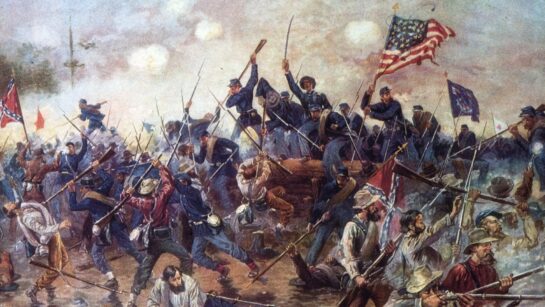
Industrialization and Global Power:
The late 19th and early 20th centuries saw rapid industrialization, urbanization, and the rise of the United States as a global economic power. Waves of immigrants from Europe and Asia contributed to the country’s diverse cultural landscape and labor force. The United States became increasingly involved in global affairs, intervening in conflicts such as World War I and emerging as a dominant force after World War II.
Cold War and Civil Rights Movement:
The Cold War era brought about intense rivalry between the United States and the Soviet Union, shaping American foreign policy and domestic politics for much of the 20th century. At home, the Civil Rights Movement fought against racial segregation and discrimination, leading to landmark legislation such as the Civil Rights Act of 1964 and the Voting Rights Act of 1965, which aimed to end institutionalized racism.
Present Condition:
In the 21st century, the United States faces a range of challenges and opportunities. Economically, it remains one of the wealthiest nations globally, with a diverse economy driven by technology, finance, and manufacturing. However, income inequality has risen, with disparities in wealth distribution becoming increasingly pronounced.
Politically, the United States is deeply divided, with partisan polarization and gridlock hindering effective governance. Issues such as healthcare, immigration, climate change, and racial justice continue to spark intense debate and contention.

Socially, the country is experiencing demographic shifts, with a growing population of immigrants and increasing ethnic and cultural diversity. While progress has been made in areas such as LGBTQ+ rights and gender equality, challenges such as systemic racism and social injustice persist.
Internationally, the United States remains a key player in global affairs, but its leadership role has been questioned, particularly in the wake of geopolitical shifts and the emergence of new powers. Challenges such as terrorism, cybersecurity threats, and competition with rising powers like China present ongoing concerns for U.S. policymakers.
Conclusion:
The history of the United States is a story of resilience, innovation, and continual change. From its humble beginnings as a group of colonies to its current status as a global superpower, the United States has navigated through numerous challenges and triumphs. As it confronts the complexities of the 21st century, the nation must draw upon its rich history and diverse strengths to address its present condition and shape its future path.
Referance: Chatgpt
Procter & Gamble: PandG Company
Procter & Gamble: History and Overview
Procter & Gamble (P&G) is one of the world’s largest and most successful consumer goods companies, known for its diverse portfolio of household and personal care products. Here’s an overview of its history and impact:
Founding Years:
P&G was founded in 1837 by William Procter, a candlemaker, and James Gamble, a soapmaker, in Cincinnati, Ohio, USA. The two entrepreneurs, who had married sisters, formed a partnership to capitalize on the rapidly growing demand for soap and candles. Their initial collaboration laid the foundation for what would become a global consumer goods empire.
Early Growth and Innovation:
In its early years, P&G focused on innovation and quality, introducing new products and refining manufacturing processes. One of its early breakthroughs was the introduction of Ivory soap in 1879, which was marketed as a pure and gentle alternative to harsh soaps of the time. This marked the beginning of P&G’s reputation for producing high-quality, innovative products.
Expansion and Diversification:
Throughout the 20th century, P&G continued to expand its product lines and reach new markets. It introduced iconic brands such as Tide laundry detergent in 1946, Crest toothpaste in 1955, and Pampers diapers in 1961. By diversifying its portfolio, P&G became a household name, with products that addressed a wide range of consumer needs.
Global Reach:
P&G’s expansion wasn’t limited to the United States. The company aggressively pursued international markets, establishing subsidiaries and manufacturing facilities around the world. Today, P&G operates in more than 180 countries and serves billions of consumers worldwide.
Innovation and Research:
Innovation has always been at the heart of P&G’s success. The company invests heavily in research and development to create new products, improve existing ones, and stay ahead of consumer trends. P&G’s research facilities, such as the Gillette Innovation Center and the P&G Beauty Research Center, are renowned for their scientific expertise and technological advancements.
Sustainability and Social Responsibility:
In recent years, P&G has increasingly focused on sustainability and social responsibility. The company has set ambitious goals to reduce its environmental footprint, improve the lives of people in its supply chain, and contribute to social causes. Initiatives like the Children’s Safe Drinking Water Program, which provides clean water to communities in need, exemplify P&G’s commitment to making a positive impact beyond its products.
Brand Portfolio:
P&G’s brand portfolio includes some of the most recognizable names in the consumer goods industry, spanning categories such as beauty and grooming, healthcare, home care, and baby care. Some of its well-known brands include Olay, Gillette, Pantene, Head & Shoulders, and Always, among many others.
Conclusion:
Procter & Gamble’s rich history, commitment to innovation, and dedication to meeting consumer needs have made it a global leader in the consumer goods industry. From its humble beginnings as a small soap and candle manufacturer in Cincinnati to its current status as a multinational powerhouse, P&G continues to shape the way people live, work, and care for themselves and their families.
Visit Website:PANDG
CHART
Company Financials
Company profile
Board of Directors
News
Sam Walton
Samuel Moore Walton, born on March 29, 1918, in Kingfisher, Oklahoma, was an American business magnate known for founding Walmart and Sam’s Club. He grew up in a farming family but moved frequently due to his father’s job as a farm appraiser and mortgage agent. During the Great Depression, his family faced financial struggles, leading Walton to take on various odd jobs to support them.
Despite the challenges, Walton excelled academically and became the youngest Eagle Scout in Missouri’s history while attending eighth grade in Shelbina, Missouri. He continued his education at the University of Missouri, where he joined the ROTC and various campus organizations, graduating with a bachelor’s degree in economics in 1940.
After college, Walton joined J.C. Penney as a management trainee but left in 1942 to serve in World War II. He eventually reached the rank of captain in the U.S. Army Intelligence Corps, supervising security at aircraft plants. Following his military service, Walton took over the management of his first variety store in Newport, Arkansas, with financial assistance from his father-in-law. This marked the beginning of his entrepreneurial journey.
With the success of his first store, Walton continued to open more Ben Franklin franchises, pioneering concepts such as offering competitive prices and ensuring well-stocked shelves. In 1950, he opened a store in Bentonville, Arkansas, which laid the foundation for the first Walmart store in 1962.
The first Walmart, located in Rogers, Arkansas, aimed to provide one-stop shopping for customers with a focus on American-made products. Walton’s strategy of locating stores in smaller towns and emphasizing logistics and efficient delivery contributed to the chain’s rapid expansion and success. By 1985, Walmart had grown from 190 stores to 800.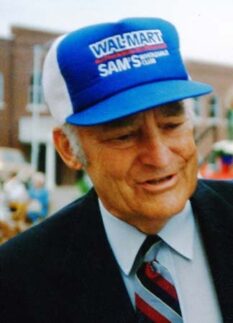
Throughout his career, Walton remained dedicated to his family and community. He married Helen Robson in 1943, and they had four children. Walton and his family were active in their local church and supported various charitable causes. He also integrated the concept of “service leadership” into Walmart’s corporate structure, emphasizing the importance of serving others.
Despite his business success, Walton faced health challenges, including a diagnosis of Hairy cell leukemia. He passed away on April 5, 1992, at the age of 74, leaving behind a lasting legacy as one of the most influential figures in retail history.
Walmart-WMT

Company Overview
Walmart Inc., founded by Sam and James Walton in 1962 in Arkansas, is a multinational retail giant headquartered in Bentonville. With over 10,000 stores and clubs across 24 countries, it operates under various names worldwide, including Walmart in the US and Canada, Walmart de México y Centroamérica in Mexico and Central America, and Flipkart Wholesale in India. The company’s diverse portfolio includes hypermarkets, discount department stores, and grocery outlets, along with Sam’s Club retail warehouses.
As of 2022, Walmart holds the title of the world’s largest company by revenue. It reported a staggering $611.3 billion in total revenue for FY2023, with over 2.2 million employees globally. The majority control of the company lies with the Walton family, who own over 50 percent through their holding company Walton Enterprises. Walmart’s success in the US grocery market is significant, with 65 percent of its $510 billion in sales coming from US operations.
Walmart’s journey from a regional player to a global powerhouse began with its listing on the New York Stock Exchange in 1972. By the late 1980s, it became the most profitable and largest retailer in the US. Its strategic expansion from the South and Midwest to coast-to-coast presence was marked by the opening of Sam’s Club and Walmart stores in various states, including California and Pennsylvania in the early 1990s.
Internationally, Walmart has experienced both successes and failures. While its ventures in Canada, the UK, Central and South America, and China thrived, it faced challenges in markets like Germany, Japan, South Korea, Brazil, and Argentina. Despite setbacks, Walmart’s continuous growth has made it a dominant force in global retail.

The company’s history dates back to Sam Walton’s entrepreneurial vision in the mid-20th century. Starting with a Ben Franklin store in 1945, Walton’s focus on low prices and high-volume sales laid the foundation for Walmart’s business model. The first Walmart Discount City store opened in 1962 in Rogers, Arkansas, with a unique blend of discount retail and customer-centric approach.
Incorporated in 1969 as Wal-Mart, Inc., the company quickly expanded across states, pioneering the concept of the Supercenter in the 1980s. By its 25th anniversary in 1987, Walmart boasted over 1,000 stores nationwide. Investments in technology, such as a private satellite network in 1987, facilitated inventory tracking and communication, contributing to its rapid growth.
Throughout the 1990s and early 2000s, Walmart solidified its position as a retail giant, entering international markets and diversifying its store formats with concepts like the Neighborhood Market. Its entry into the Dow Jones Industrial Average in 1997 signified its status as a corporate powerhouse.
Reference: Wikipedia
However, Walmart’s expansion hasn’t been without criticism. Concerns over its impact on local businesses, labor practices, and community welfare have been subjects of debate. Despite controversies, Walmart’s philanthropic efforts, like its response to Hurricane Katrina, have been recognized, showcasing its logistical capabilities and corporate responsibility.

Charles Fishman’s book “The Wal-Mart Effect” in 2006 shed light on the company’s supply chain operations and efficiency drive. Although Walmart faced scrutiny, particularly regarding its labor relations, it continued to grow and innovate, maintaining its position as a leader in the retail industry.
Looking forward, Walmart faces the challenge of balancing growth with social and environmental responsibility. As it continues to expand into e-commerce, healthcare, and sustainability initiatives, its actions will shape not only the retail landscape but also broader economic and societal trends.
Chart
Company Financials
Company Details
Board Of Directors
Latest News
SUPER MICRO COMPUTER, INC.-SMCI
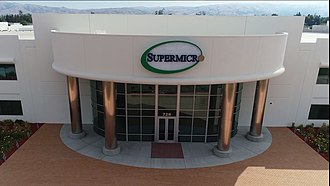
Company Overview
Super Micro Computer, Inc., known as Supermicro, stands as a prominent American information technology company headquartered in San Jose, California. Since its establishment on November 1, 1993, it has solidified its position as one of the leading producers of high-performance servers, with a focus on efficiency. Additionally, Supermicro offers server management software and storage systems catering to diverse markets such as enterprise data centers, cloud computing, artificial intelligence, 5G, and edge computing.

Initially, Supermicro started as a modest operation with only five individuals, led by Charles Liang and his wife Chiu-Chu Liu. Liang, armed with a background in Electrical Engineering, played a pivotal role in the company’s foundation. Prior to Supermicro, he had significant experience in the tech industry, including serving as the president and chief design engineer of Micro Center Computer.
Over the years, Supermicro embarked on a journey of international expansion, establishing manufacturing operations in Taiwan and subsidiaries in the Netherlands. Despite some setbacks, such as a plea of guilt in 2006 related to violating a U.S. embargo, the company continued to grow.
In 2007, Supermicro made its debut on the stock market with an initial public offering, marking a significant milestone in its journey. Subsequently, it experienced substantial growth, with fiscal year 2023 revenues reaching $7.1 billion and a global workforce exceeding 5,000 employees.
However, the company faced challenges, notably allegations of server tampering in 2018, which it vehemently denied. Despite these controversies, Supermicro remained resilient, focusing on innovation and product development.
Recent years have seen Supermicro introducing cutting-edge products like the H12 A+ Superblade and partnering with industry leaders like Rakuten Symphony. Moreover, its commitment to environmental sustainability is evident through initiatives like liquid-cooled servers, aligning with ESG policies.
Supermicro’s corporate headquarters, housed in the Supermicro Green Computing Park, reflect its commitment to innovation and sustainability. The campus, located in North San Jose, has undergone significant expansion, showcasing the company’s growth trajectory.

Despite challenges and controversies, Supermicro’s trajectory remains upward, evident from its inclusion in the S&P 500 index and its consistent efforts towards technological advancement and corporate responsibility.
CHART
Financial Data
BORD OF DRECTOR
News
Johnson & Johnson-JNJ

Company Overview
 Johnson & Johnson (J&J) stands as a titan in the pharmaceutical and medical technology sectors, tracing its roots back to its founding in 1886 by the Johnson brothers. From its inception, J&J has been at the forefront of innovation, starting with ready-to-use sterile surgical dressings and expanding into a diverse array of healthcare products. The company’s commitment to quality and innovation has propelled it to become one of the largest and most valuable corporations globally.
Johnson & Johnson (J&J) stands as a titan in the pharmaceutical and medical technology sectors, tracing its roots back to its founding in 1886 by the Johnson brothers. From its inception, J&J has been at the forefront of innovation, starting with ready-to-use sterile surgical dressings and expanding into a diverse array of healthcare products. The company’s commitment to quality and innovation has propelled it to become one of the largest and most valuable corporations globally.
The early history of Johnson & Johnson is marked by groundbreaking achievements, including the introduction of the world’s first commercial first aid kits, maternity kits, and sanitary products. Notably, the company played a significant role in providing medical aid during crises such as wars and natural disasters, showcasing its dedication to societal well-being.
Throughout the decades, J&J continued to expand its portfolio through strategic acquisitions and developments. Noteworthy milestones include the creation of Band-Aid adhesive bandages, the introduction of prescription contraceptive gel Ortho-Gynol, and the launch of the first disposable contact lenses, Acuvue. These innovations underscore the company’s commitment to addressing diverse healthcare needs.
J&J’s leadership in crisis management was exemplified during the Tylenol tampering incident in 1982, where the company’s swift response set industry standards for handling product safety issues. This incident demonstrated J&J’s unwavering commitment to consumer safety and trust.
The company’s global footprint expanded significantly over the years, with operations spanning across various regions. Acquisitions of companies like Janssen Pharmaceuticals and Ethicon further diversified its offerings, strengthening its position in key therapeutic areas and medical device technologies.
In recent years, J&J’s focus on innovation has extended to cutting-edge treatments for conditions like severe depression and tuberculosis. Additionally, its response to the COVID-19 pandemic exemplifies its dedication to public health, including the development of a not-for-profit COVID-19 vaccine in collaboration with governmental agencies.
Today, Johnson & Johnson operates under two primary business sectors: Innovative Medicine and MedTech. Its Innovative Medicine segment focuses on therapeutic areas such as immunology, oncology, and infectious diseases, while the MedTech segment offers a wide range of medical devices and solutions for various healthcare needs.
With a rich history of innovation, a commitment to societal well-being, and a global presence, Johnson & Johnson continues to be a leading force in the pharmaceutical and medical technology industries, shaping the future of healthcare worldwide.
Officer and Director
Chart
Fundamentals Data
NEWS
BlackRock

BlackRock, Inc. is the world’s largest asset manager, boasting $10 trillion in assets under management as of December 31, 2023. Founded in 1988 by Larry Fink and several others, including Robert S. Kapito and Susan Wagner, BlackRock initially focused on providing asset management services with a risk management perspective. It quickly grew, aided by investments from Peter Peterson of The Blackstone Group, and by 1992, it was managing $17 billion in assets. The firm, initially known as Blackstone Financial Management, later adopted the name BlackRock.
In 1999, BlackRock went public, listing on the New York Stock Exchange. Over the years, it expanded both organically and through acquisitions, notably merging with Merrill’s Investment Managers division in 2006 and acquiring State Street Research & Management’s holding company in 2004.
BlackRock’s commitment to innovation is evident in its launch of BlackRock Solutions in 2000, which evolved into a comprehensive analytics and risk management division. The firm continued its expansion through acquisitions, such as FutureAdvisor in 2015 and eFront in 2019.
In 2010, BlackRock made a significant move by acquiring Barclays Global Investors, including its exchange-traded fund business, iShares, for $13.5 billion. This acquisition propelled BlackRock to the forefront of the ETF market.
BlackRock’s global presence is vast, with 78 offices in 38 countries and clients in 100 countries. It manages the iShares group of exchange-traded funds and is considered one of the Big Three index fund managers, alongside The Vanguard Group and State Street.![]()
Despite its success, BlackRock has faced criticism for its investment practices, particularly regarding environmental, social, and corporate governance (ESG) issues. It has been scrutinized for investing in companies involved in fossil fuels, the arms industry, and human rights violations, while also promoting gender diversity and reducing investments in companies contributing to climate change and gun violence.
In recent years, BlackRock has played a significant role in global financial markets, managing corporate bond-buying programs for the Federal Reserve in response to the COVID-19 pandemic and pioneering the launch of spot Bitcoin and Ethereum exchange-traded funds (ETFs).
In terms of finances, BlackRock’s revenue and assets under management have seen steady growth over the years, reflecting its position as a leading asset manager on the global stage. Additionally, the company has been active in mergers and acquisitions, including the recent acquisition of Global Infrastructure Partners for $12.5 billion in January 2024.
Board of Director
News
Documentary Videos
Lisa Su
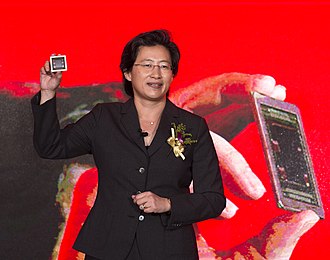
 Lisa Tzwu-Fang Su’s journey from a curious child fascinated by engineering to becoming one of the most influential figures in the semiconductor industry is a testament to her exceptional talent and dedication. Born in Taiwan and raised in the United States, Su’s early exposure to mathematics and science, coupled with her parents’ encouragement, laid the foundation for her future success.
Lisa Tzwu-Fang Su’s journey from a curious child fascinated by engineering to becoming one of the most influential figures in the semiconductor industry is a testament to her exceptional talent and dedication. Born in Taiwan and raised in the United States, Su’s early exposure to mathematics and science, coupled with her parents’ encouragement, laid the foundation for her future success.
After graduating from the Bronx High School of Science, Su pursued her passion for electrical engineering at the Massachusetts Institute of Technology (MIT). Her academic journey at MIT, where she earned both her bachelor’s and master’s degrees, was marked by groundbreaking research in silicon-on-insulator (SOI) technology, foreshadowing her future contributions to the semiconductor field.
Su’s professional career took off at Texas Instruments and later at IBM, where she played a pivotal role in developing innovative semiconductor manufacturing technologies, including the adoption of copper connections in semiconductor chips. Her leadership and expertise earned her recognition as a top innovator under 35 by MIT Technology Review and paved the way for her ascent through the ranks at IBM, eventually becoming vice president of IBM’s Semiconductor Research and Development Center.
In subsequent roles at IBM and later at Freescale Semiconductor, where she served as chief technology officer and senior vice president, Su continued to demonstrate her strategic vision and technical prowess. Her tenure at Freescale was marked by significant achievements, including the successful filing for an IPO in 2011, underlining her reputation as a transformational leader in the semiconductor industry.
Su’s trajectory reached new heights when she joined AMD in 2012 and assumed various leadership positions before being appointed president and CEO in 2014. Under her guidance, AMD underwent a remarkable transformation, diversifying its product portfolio and expanding into new markets such as gaming, datacenter, and immersive platforms. Su’s strategic initiatives propelled AMD to unprecedented growth, earning her accolades such as Fortune’s World’s Greatest Leaders and Barron’s World’s Best CEO.
Beyond her professional achievements, Su has been recognized for her contributions to the advancement of women in technology and her philanthropic endeavors. She has received numerous awards and honors, including being named one of the 100 Most Powerful Women by Forbes and induction into the Women in Technology Hall of Fame.
As of 2024, Su’s impact on the semiconductor industry and her estimated net worth of over $1 billion underscore her status as a trailblazer and visionary leader, inspiring generations to come in the fields of science, technology, engineering, and mathematics (STEM).
Advanced Micro Devices-AMD
CHART
Financials Data
Board oF Director
News
Company profile
Videos
CEO Interview
JPMorgan Chase & Co.: An Overview
 JPMorgan Chase & Co. stands as an emblem of American finance, tracing its roots back to the 18th century. Established in 1799, it has since evolved into the largest bank in the United States, headquartered in New York City and incorporated in Delaware. With a robust presence in both domestic and international markets, it boasts the world’s largest bank by market capitalization, a testament to its enduring legacy and global significance.
JPMorgan Chase & Co. stands as an emblem of American finance, tracing its roots back to the 18th century. Established in 1799, it has since evolved into the largest bank in the United States, headquartered in New York City and incorporated in Delaware. With a robust presence in both domestic and international markets, it boasts the world’s largest bank by market capitalization, a testament to its enduring legacy and global significance.
A Legacy of Merger and Expansion
The institution’s journey is marked by a series of strategic mergers and acquisitions. The amalgamation of Chase Manhattan Bank, J.P. Morgan & Co., and Bank One, among others, has shaped its current form. Each merger brought with it a wealth of expertise and resources, reinforcing JPMorgan Chase’s position as a financial powerhouse.
Pioneering Financial Services
JPMorgan Chase’s offerings span a wide spectrum of financial services, ranging from investment banking to retail banking and asset management. Its investment banking arm is renowned for its expertise in corporate advisory, mergers and acquisitions, sales and trading, and public offerings. Moreover, its retail banking and credit card services under the Chase brand cater to millions of customers across the U.S. and the United Kingdom.
Navigating Challenges and Growth
Despite its stature, JPMorgan Chase has not been immune to challenges. Regulatory scrutiny, risk management concerns, and legal settlements have punctuated its journey. However, the firm’s resilience and commitment to sound financial practices have enabled it to weather storms and emerge stronger.
A Legacy of Leadership
Key figures have left an indelible mark on JPMorgan Chase’s trajectory. From the visionary leadership of David Rockefeller to the transformative tenure of Jamie Dimon, each leader has played a pivotal role in shaping the institution’s identity and guiding its growth.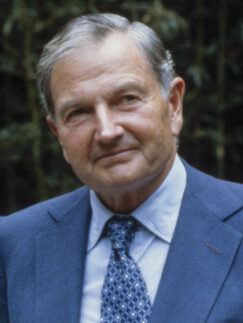
Global Reach and Impact
With a presence in major financial centers around the world, JPMorgan Chase’s influence transcends borders. From Japan to Russia, from Australia to Saudi Arabia, its operations span continents, contributing to the fabric of global finance.
Responding to Crisis
The institution’s response to crisis situations has been notable. From the acquisition of Bear Stearns during the 2008 financial crisis to the takeover of Washington Mutual, JPMorgan Chase has demonstrated agility and decisiveness in navigating turbulent times.
Recent Developments
In a significant move, JPMorgan Chase acquired the assets of First Republic Bank in 2023, further solidifying its position in the market. This strategic maneuver underscores the company’s commitment to growth and expansion, even in the face of challenges.
Looking Ahead
 As it prepares to move into its new headquarters at 270 Park Avenue in 2025, JPMorgan Chase stands poised to continue its legacy of innovation and excellence. With a steadfast focus on serving its customers and driving value for its stakeholders, the institution remains a cornerstone of the global financial landscape.
As it prepares to move into its new headquarters at 270 Park Avenue in 2025, JPMorgan Chase stands poised to continue its legacy of innovation and excellence. With a steadfast focus on serving its customers and driving value for its stakeholders, the institution remains a cornerstone of the global financial landscape.
Watch Documentry
News
Google-Alphabet
Vladimir Tenev
 Vladimir Tenev, born on February 13, 1987, in Varna, Bulgaria, is a Bulgarian-American entrepreneur known as the co-founder and CEO of Robinhood, a prominent US-based financial technology services company. Tenev’s parents migrated to the United States when he was five years old, both working for the World Bank. He attended Thomas Jefferson High School for Science and Technology in Fairfax County, Virginia.
Vladimir Tenev, born on February 13, 1987, in Varna, Bulgaria, is a Bulgarian-American entrepreneur known as the co-founder and CEO of Robinhood, a prominent US-based financial technology services company. Tenev’s parents migrated to the United States when he was five years old, both working for the World Bank. He attended Thomas Jefferson High School for Science and Technology in Fairfax County, Virginia.
Tenev pursued his higher education at Stanford University, where he earned a degree in mathematics and crossed paths with his future business partner, Baiju Bhatt. While initially studying for a mathematics Ph.D. at UCLA, he dropped out to embark on entrepreneurial ventures with Bhatt.
In 2010, Tenev and Bhatt founded a high-frequency trading software company called Celeris, which they later abandoned to establish Chronos Research in January 2011. Chronos Research specialized in selling low-latency software to other trading firms and banks.
Their most notable venture, however, came in 2013 when Tenev and Bhatt co-founded Robinhood, a revolutionary trading platform. Robinhood aimed to democratize finance by offering commission-free trading, challenging the traditional brokerage model. The platform gained significant traction, especially after the launch of its mobile app to the public in 2015.
Tenev’s leadership saw Robinhood grow exponentially, attracting billions in valuation following funding rounds. In November 2020, he became the sole CEO of Robinhood, having previously shared the co-CEO title with Bhatt. The company went public via an initial public offering in July 2021, achieving a valuation of $32 billion.
However, Robinhood faced intense scrutiny during the GameStop short squeeze in January 2021. Tenev defended Robinhood’s decision to restrict trading, citing the need to meet federal clearinghouse deposit requirements. He testified before the United States House Committee on Financial Services, facing criticism from both parties for his handling of the situation.
Tenev’s journey exemplifies the entrepreneurial spirit and innovation in the fintech industry, although it has been marked by challenges and controversies. Despite this, he continues to lead Robinhood in its mission to empower individuals in the world of finance.
Visit:Robinhood
Interview
ROBINHOOD-HOOD

CHART
Company Profile
Financial Data
Company Profile and History

Robinhood, the popular trading app, has had a turbulent yet transformative history since its inception.
Early Days: Founded in 2013 by Vladimir Tenev and Baiju Bhatt, Robinhood aimed to democratize finance by offering commission-free trading to retail investors. It quickly gained popularity for its user-friendly interface and accessibility, attracting a young and tech-savvy user base.
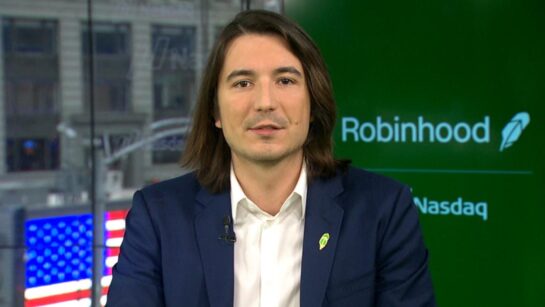 Initial Success: Robinhood’s early success was fueled by its simplicity and the novelty of commission-free trading, disrupting traditional brokerage models. Its intuitive mobile app and the ability to trade fractional shares made investing more accessible to a broader audience.
Initial Success: Robinhood’s early success was fueled by its simplicity and the novelty of commission-free trading, disrupting traditional brokerage models. Its intuitive mobile app and the ability to trade fractional shares made investing more accessible to a broader audience.
Expansion and Challenges: As Robinhood grew, it faced various challenges, including regulatory scrutiny, technological glitches, and criticism for its gamification of trading. The app’s interface, which used elements like confetti animations to celebrate trades, attracted both praise and concern for potentially encouraging risky behavior.
GameStop Saga: One of the most notable events in Robinhood’s history occurred in January 2021 during the GameStop short squeeze. As retail investors, organized through online forums like Reddit’s WallStreetBets, drove up the stock price of GameStop, Robinhood faced backlash for temporarily restricting trading in GameStop and other volatile stocks. Critics accused the company of favoring Wall Street interests over its users.
 Regulatory Scrutiny: Robinhood’s handling of the GameStop saga intensified regulatory scrutiny. Lawmakers questioned the app’s business model and its impact on market volatility and retail investors. Robinhood executives testified before Congress, and regulatory agencies launched investigations into the company’s practices.
Regulatory Scrutiny: Robinhood’s handling of the GameStop saga intensified regulatory scrutiny. Lawmakers questioned the app’s business model and its impact on market volatility and retail investors. Robinhood executives testified before Congress, and regulatory agencies launched investigations into the company’s practices.
Recent Developments: Despite the controversies, Robinhood continued to grow and evolve. It expanded its product offerings beyond equities to include cryptocurrencies and options trading. The company also faced challenges related to cybersecurity and infrastructure as it scaled its operations.
Present Day: As of my last update, Robinhood remains a dominant force in the retail trading space. Its user base continues to grow, fueled by market volatility, increased interest in investing among young people, and the ease of access provided by its platform. However, the company faces ongoing challenges related to regulatory compliance, customer trust, and competition from other brokerage firms and fintech startups.
Overall, Robinhood’s history is a testament to the power of technology to disrupt traditional industries and empower individual investors, while also highlighting the complexities and risks associated with democratizing finance.
Board of Director
-
- Vlad Tenev (Chair): Co-Founder, CEO & President (Role: Leads company strategy, operations, and overall direction)
- Baiju Bhatt: Co-Founder (Role: Previously served as Co-CEO and Co-President, current role unspecified)
- Jon Rubinstein (Lead Independent Director): Senior Advisor at PDT Partners (Role: Provides independent oversight and guidance to the board)
- Susan Segal: (Role: Specific responsibilities not publicly available)
- Paula Loop: Senior Advisor at PDT Partners (Role: Offers financial services expertise and guidance)
- Robert Zoellick: Senior Fellow at the Belfer Center for Science and International Affairs (Role: Contributes experience in international affairs and economics)
- Dara Treseder: (Role: Specific responsibilities not publicly available, likely related to marketing and communications)
- Frances Frei: Professor at Harvard Business School (Role: Advises on technology and operations management)
- Meyer Malka: (Role: Specific area of contribution not publicly available)
AMAZON-AMZN(COMPANY DETAILS)

CHART
Fundamental Data
BOARD OF DIRECTORS
ARTICLE FROM: CHATGPT
Company Details and History
Title: The Evolution of Amazon: Navigating the Present and Past
 In the annals of modern commerce, few entities stand as prominently as Amazon. From its humble beginnings as an online bookstore to its current status as a global tech giant, the journey of Amazon is nothing short of extraordinary. As we delve into its present and past, we uncover a narrative of innovation, disruption, and relentless ambition.
In the annals of modern commerce, few entities stand as prominently as Amazon. From its humble beginnings as an online bookstore to its current status as a global tech giant, the journey of Amazon is nothing short of extraordinary. As we delve into its present and past, we uncover a narrative of innovation, disruption, and relentless ambition.
The Genesis: From Books to Beyond
Amazon’s story commenced in 1994 when Jeff Bezos, a former hedge fund executive, founded the company in his garage in Seattle. Initially conceived as an online marketplace for books, Bezos had grander aspirations from the start. He envisioned Amazon as the “everything store,” where customers could find and purchase any product imaginable with unparalleled convenience.
 Pioneering E-Commerce
Pioneering E-Commerce
Throughout the late 1990s and early 2000s, Amazon blazed trails in the realm of e-commerce. The company rapidly expanded its product offerings, diversifying into categories beyond books. Its commitment to customer service, exemplified by innovations like one-click purchasing and Prime membership, endeared it to millions of consumers worldwide.
Disruption and Diversification
Amazon’s disruptive tendencies were not confined to e-commerce alone. The company ventured into new territories with the launch of Amazon Web Services (AWS) in 2006. AWS revolutionized the tech industry by offering scalable cloud computing solutions, setting the stage for Amazon’s transformation into a tech powerhouse.
 The Retail Revolution
The Retail Revolution
In the retail landscape, Amazon’s impact has been seismic. Traditional brick-and-mortar retailers have struggled to compete with its vast selection, competitive pricing, and expedited shipping options. The rise of Amazon has reshaped consumer expectations, prompting other retailers to adapt or face obsolescence.
Challenges and Controversies
Despite its remarkable success, Amazon has faced its fair share of challenges and controversies. Criticisms of its labor practices, antitrust concerns, and environmental impact have drawn scrutiny from regulators, activists, and consumers alike. As Amazon’s influence continues to grow, so too does the scrutiny surrounding its operations.
The Present Landscape
In the present day, Amazon stands as a titan of industry, with a market capitalization surpassing $1 trillion. Its ecosystem encompasses e-commerce, cloud computing, digital streaming, artificial intelligence, and more. The company’s relentless pursuit of innovation has led to the creation of products like the Kindle, Echo, and Alexa, further solidifying its presence in consumers’ lives.
 Future Prospects
Future Prospects
Looking ahead, Amazon shows no signs of slowing down. Its forays into sectors such as healthcare, logistics, and autonomous vehicles signal ambitions beyond its current domains. However, navigating an increasingly complex regulatory landscape and addressing societal concerns will pose formidable challenges in the years to come.
Conclusion
The evolution of Amazon from a modest online bookstore to a global behemoth is a testament to the power of innovation and entrepreneurship. Its story is one of relentless ambition, disruptive innovation, and enduring controversy. As Amazon continues to shape the future of commerce and technology, its journey serves as both inspiration and cautionary tale in the ever-changing landscape of business and society.
NEWS
NETFLIX
 Title: The Evolution of Netflix: From Humble Beginnings to Global Streaming Giant
Title: The Evolution of Netflix: From Humble Beginnings to Global Streaming Giant
Introduction: In the vast landscape of entertainment, few companies have had as profound an impact as Netflix. From its humble beginnings as a DVD rental service to its current status as a dominant force in the streaming industry, Netflix has transformed the way we consume media. This article delves into the fascinating history of Netflix, its journey to becoming a household name, and the story of its visionary founders.
The Birth of Netflix: Netflix was founded in 1997 by Reed Hastings and Marc Randolph, two entrepreneurs with a vision to revolutionize the way people rented movies. The idea came to Hastings after incurring a $40 late fee for returning a rented copy of “Apollo 13”. Frustrated by the traditional video rental model, Hastings saw an opportunity to leverage the internet to create a more convenient and cost-effective solution.
Initially offering DVD rentals by mail, Netflix quickly gained traction with its subscription-based model, which allowed customers to rent an unlimited number of DVDs for a flat monthly fee. This innovative approach disrupted the brick-and-mortar rental industry dominated by companies like Blockbuster.
The Transition to Streaming: As technology advanced and internet speeds improved, Netflix recognized the potential of streaming media. In 2007, the company launched its streaming service, allowing subscribers to instantly watch a vast library of movies and TV shows online. This marked a pivotal moment in Netflix’s evolution, as it shifted its focus from physical media to digital content delivery.
The introduction of original content further solidified Netflix’s position in the streaming market. Producing acclaimed series like “House of Cards”, “Stranger Things”, and “The Crown”, Netflix demonstrated its ability to create compelling and diverse content that appealed to a global audience.
Global Expansion and Market Dominance: Netflix’s growth has been nothing short of phenomenal. From its roots in the United States, the company has expanded its presence to over 190 countries, reaching millions of subscribers worldwide. Its subscription-based model and personalized recommendation algorithms have helped Netflix retain customers and drive continued growth.
Despite facing competition from other streaming services like Amazon Prime Video, Hulu, and Disney+, Netflix remains the dominant player in the industry. Its extensive library of content, user-friendly interface, and commitment to innovation have solidified its position as the go-to destination for entertainment.
The Visionary Founders: Reed Hastings and Marc Randolph are the masterminds behind Netflix’s success. Hastings, a former math teacher turned entrepreneur, provided the strategic vision and leadership necessary to navigate Netflix through its various stages of growth. His commitment to innovation and willingness to take risks have been instrumental in shaping the company’s trajectory.
Randolph, on the other hand, brought entrepreneurial spirit and a knack for product development to the table. As the original CEO of Netflix, Randolph played a key role in shaping the company’s early years and laying the foundation for its future success.
Together, Hastings and Randolph embody the spirit of entrepreneurship and innovation that defines Netflix. Their bold ideas and relentless pursuit of excellence have propelled the company to unprecedented heights, making it a household name synonymous with entertainment.
Conclusion: From its humble beginnings as a DVD rental service to its current status as a global streaming powerhouse, Netflix’s journey has been nothing short of remarkable. Through innovation, strategic vision, and a commitment to excellence, the company has revolutionized the way we consume media. As Netflix continues to push the boundaries of entertainment, one thing remains clear: its impact on the industry will be felt for years to come.
CHART
BOARD OF DIRECTOR
NEWS
Tesla
Title: Revolution on Wheels: The History and Success Story of Tesla
In the realm of automotive innovation, Tesla stands as a beacon of cutting-edge technology, sustainability, and ambition. Founded in 2003 by Martin Eberhard and Marc Tarpenning, later joined by Elon Musk, Tesla set out on a mission to accelerate the world’s transition to sustainable energy through electric vehicles (EVs) and renewable energy solutions. What began as a vision has transformed into a global phenomenon, reshaping the automotive industry and redefining the parameters of what is possible.
The Genesis of Tesla:
Tesla’s journey traces back to Silicon Valley, a hotbed of technological innovation. The company’s founders shared a passion for electric vehicles and recognized the potential for disruption in an industry dominated by internal combustion engines. Their vision was not just to create electric cars but to make them desirable, practical, and accessible to the masses.
In 2008, Tesla unveiled its groundbreaking Roadster, a sleek sports car that shattered perceptions about electric vehicles. With its impressive acceleration and long-range capabilities, the Roadster demonstrated that electric cars could be both high-performance and environmentally friendly. This paved the way for Tesla’s subsequent endeavors and established the company as a trailblazer in the EV market.
Innovating for the Future:
Following the success of the Roadster, Tesla shifted its focus to developing more affordable electric vehicles for mainstream consumers. In 2012, the company introduced the Model S, a luxury sedan lauded for its range, performance, and advanced features such as over-the-air software updates and Autopilot, Tesla’s semi-autonomous driving system. The Model S quickly became a status symbol, appealing to eco-conscious drivers and tech enthusiasts alike.
Tesla continued to expand its product lineup with the introduction of the Model X, a luxury SUV featuring distinctive falcon-wing doors and industry-leading safety features. The company’s commitment to innovation was further demonstrated with the unveiling of the Model 3 in 2017, a more affordable electric sedan designed to appeal to a broader audience. The Model 3’s sleek design, impressive range, and accessible price point catapulted Tesla into the mainstream, making electric vehicles a viable option for millions of consumers worldwide.
Beyond Automobiles:
While Tesla’s success is largely synonymous with its electric vehicles, the company’s impact extends far beyond the automotive sector. Under Elon Musk’s leadership, Tesla has diversified its portfolio to include energy storage solutions, solar panels, and solar roofs. The acquisition of SolarCity in 2016 solidified Tesla’s position as a leader in sustainable energy, offering integrated solutions for both transportation and power generation.
Tesla’s Gigafactories, sprawling manufacturing facilities located around the globe, are instrumental in driving down costs and increasing production capacity. These state-of-the-art facilities not only produce Tesla vehicles and energy products but also play a crucial role in advancing battery technology, a cornerstone of the company’s strategy to accelerate the transition to renewable energy.
Challenges and Triumphs:
Despite its remarkable success, Tesla has not been without its challenges. The company has faced criticism for production delays, quality control issues, and concerns over workplace conditions. Elon Musk’s unconventional leadership style and penchant for bold statements have also attracted scrutiny from investors and regulators alike.
However, Tesla’s ability to overcome adversity and defy skeptics has been nothing short of remarkable. The company’s relentless focus on innovation, coupled with its passionate fanbase and unwavering commitment to its mission, has propelled it to new heights. Tesla’s stock price has soared, making it one of the most valuable automakers in the world, surpassing industry stalwarts with decades of experience.
Looking Ahead:
As Tesla continues to push the boundaries of what is possible, the future appears bright. The company’s ambitious projects, including the development of fully autonomous vehicles and the construction of Gigafactories capable of producing battery cells at an unprecedented scale, promise to reshape industries and revolutionize transportation.
Moreover, Tesla’s influence extends beyond the realm of business, inspiring a new generation of entrepreneurs, engineers, and environmentalists to pursue sustainable solutions to the world’s most pressing challenges. Whether it’s through electric vehicles, renewable energy, or energy storage, Tesla’s legacy is sure to endure, leaving an indelible mark on the history of technology and innovation.
CHART
Financials
OFFICER AND DIRECTOR
NEWS
MICROSOFT,CHART,NEWS DATA AND PRICE

 Introduction: Microsoft, a name synonymous with computing giants, has had a remarkable journey from its humble beginnings to its status as one of the most influential technology companies in the world. Founded in 1975 by Bill Gates and Paul Allen, Microsoft’s story is not just about innovation and success, but also about challenges, struggles, and resilience. Let’s take a closer look at the history and evolution of Microsoft, exploring its pivotal moments and how it has shaped the modern tech landscape.
Introduction: Microsoft, a name synonymous with computing giants, has had a remarkable journey from its humble beginnings to its status as one of the most influential technology companies in the world. Founded in 1975 by Bill Gates and Paul Allen, Microsoft’s story is not just about innovation and success, but also about challenges, struggles, and resilience. Let’s take a closer look at the history and evolution of Microsoft, exploring its pivotal moments and how it has shaped the modern tech landscape.
Early Years and the Rise of DOS: Microsoft’s journey started in Albuquerque, New Mexico, where Gates and Allen developed a version of the BASIC programming language for the Altair 8800 microcomputer. However, it was the deal with IBM in 1980 to provide an operating system for their upcoming personal computer that propelled Microsoft to the forefront of the industry. This operating system, called MS-DOS (Microsoft Disk Operating System), became the foundation of Microsoft’s success in the 1980s.
Windows Revolutionizes Computing: Building upon the success of MS-DOS, Microsoft introduced Windows in 1985, forever changing the computing landscape. Windows offered a graphical user interface (GUI) that made computers more accessible to the masses. Despite facing initial skepticism, Windows eventually became the dominant operating system for personal computers, cementing Microsoft’s position as a tech powerhouse.
Antitrust Battles and Legal Challenges: As Microsoft’s influence grew, so did scrutiny from regulators. In the late 1990s and early 2000s, the company faced antitrust investigations in the United States and Europe. Accusations of anti-competitive behavior, such as bundling Internet Explorer with Windows to undermine competitors like Netscape Navigator, led to legal battles that tarnished Microsoft’s reputation and resulted in significant fines and settlements.
The Gates Transition and New Leadership: In 2000, Bill Gates stepped down as CEO, handing the reins to Steve Ballmer, who led the company through a period of both innovation and challenges. Under Ballmer’s leadership, Microsoft expanded its product portfolio with offerings like Xbox gaming consoles and the Azure cloud platform. However, the company also faced criticism for missing out on key trends in the tech industry, such as mobile computing.
Satya Nadella’s Transformation: In 2014, Satya Nadella took over as CEO, ushering in a new era of innovation and cultural change at Microsoft. Nadella prioritized cloud computing and productivity services, leading to the rapid growth of Azure and Office 365. He also embraced open-source software and forged partnerships with erstwhile competitors, such as Linux and Apple, positioning Microsoft as a more collaborative and inclusive company.
Microsoft Today: A Tech Powerhouse Reinvented: Today, Microsoft is a global technology leader with a diverse portfolio spanning productivity tools, cloud services, gaming, and enterprise solutions. Its market value has soared, making it one of the most valuable companies in the world. Microsoft’s success can be attributed not only to its technological prowess but also to its ability to adapt, innovate, and reinvent itself in an ever-changing industry.
Conclusion: The history of Microsoft is a testament to the power of innovation, resilience, and adaptability. From its origins in a garage to its current status as a tech giant, Microsoft’s journey has been marked by triumphs, challenges, and transformation. As it continues to shape the future of technology, Microsoft remains a beacon of inspiration for entrepreneurs, innovators, and tech enthusiasts around the world.
CHART
Officers and Directors
Steve Jobs
/cdn.vox-cdn.com/uploads/chorus_asset/file/13874040/stevejobs.1419962539.png)
Introduction:
Steve Jobs, the co-founder of Apple Inc., is widely regarded as one of the most influential figures in the history of technology and business. His visionary leadership, relentless pursuit of excellence, and iconic product launches have left an indelible mark on the world. In this biography, we delve into the life of Steve Jobs, exploring his early years, his career at Apple, his personal and professional triumphs, as well as his enduring legacy.
Early Life and Education:
Steven Paul Jobs was born on February 24, 1955, in San Francisco, California, to Abdulfattah Jandali and Joanne Schieble. He was adopted by Paul and Clara Jobs, a working-class couple from Mountain View, California. From an early age, Jobs showed a keen interest in electronics and mechanics. He often tinkered with gadgets in his father’s workshop, foreshadowing his future as a tech visionary.
Jobs attended Reed College but dropped out after just one semester. However, he continued to audit classes, including a calligraphy course that later influenced the typography and design of Apple products. Jobs traveled to India in search of spiritual enlightenment and returned to the United States with a newfound sense of purpose.
Founding of Apple:
In 1976, Jobs co-founded Apple Computer, Inc., with his friend Steve Wozniak and Ronald Wayne, in the Jobs family garage. Their first product, the Apple I, was a modest success, but it was the introduction of the Apple II that catapulted the company to fame. The Apple II was the first consumer-friendly personal computer, featuring a keyboard and color graphics—an innovation that revolutionized the industry.
Despite his early success, Jobs clashed with colleagues and was eventually ousted from Apple in 1985. Undeterred, he embarked on new ventures, founding NeXT Inc. and acquiring Pixar Animation Studios, which would later produce blockbuster hits like “Toy Story” and “Finding Nemo.”
Return to Apple and Innovation:
In 1997, Apple acquired NeXT, bringing Jobs back into the fold. He assumed the role of CEO and began a remarkable turnaround of the struggling company. Under his leadership, Apple introduced a series of groundbreaking products, including the iMac, iPod, iPhone, and iPad. Jobs had an unparalleled ability to anticipate consumer needs and design products that were both aesthetically pleasing and intuitive to use.
Legacy:
Steve Jobs passed away on October 5, 2011, after a long battle with pancreatic cancer. His death sparked an outpouring of grief from around the world, as millions mourned the loss of a visionary leader. Jobs’ legacy lives on through Apple, which continues to innovate and push the boundaries of technology.
Beyond his contributions to the tech industry, Jobs’ impact extends to design, creativity, and entrepreneurship. He embodied the spirit of innovation and inspired countless individuals to think differently and pursue their passions relentlessly.
In conclusion, Steve Jobs’ life is a testament to the power of vision, perseverance, and passion. His journey from college dropout to tech icon serves as an inspiration to us all, reminding us that anything is possible with the right mindset and determination.



